Ep 87: The Rose of Versailles Vol. 1, by Riyoko Ikeda
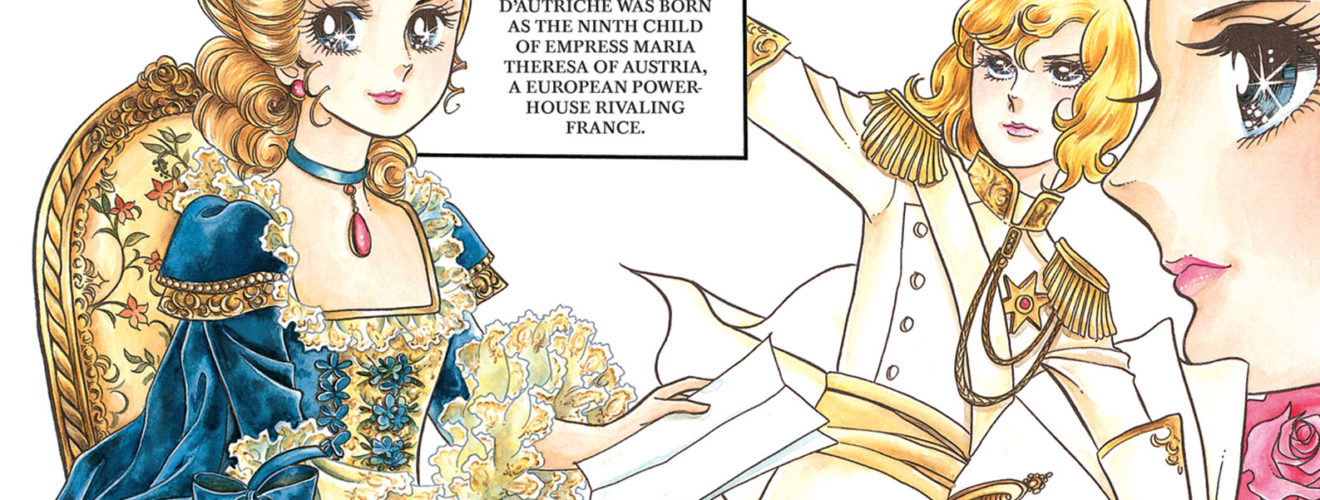
One of the great classic shojo manga is finally available in English, Riyoko Ikeda’s Rose of Versailles, and the Mangasplaining team dig in to see if it lives up to the decades of hype! Will Chip like this better than his last foray into the [manga] classics? You’ll have to listen to find out!
Powered by RedCircle
Listen and Subscribe to the Podcast:Google | Apple | Stitcher | RedCircle | Amazon | Radio Public | PocketCast | Spotify
THIS EPISODE:
00:01: Rose of Versailles, by Riyoko Ikeda
47:31: The Break
49:00: Shout-outs!
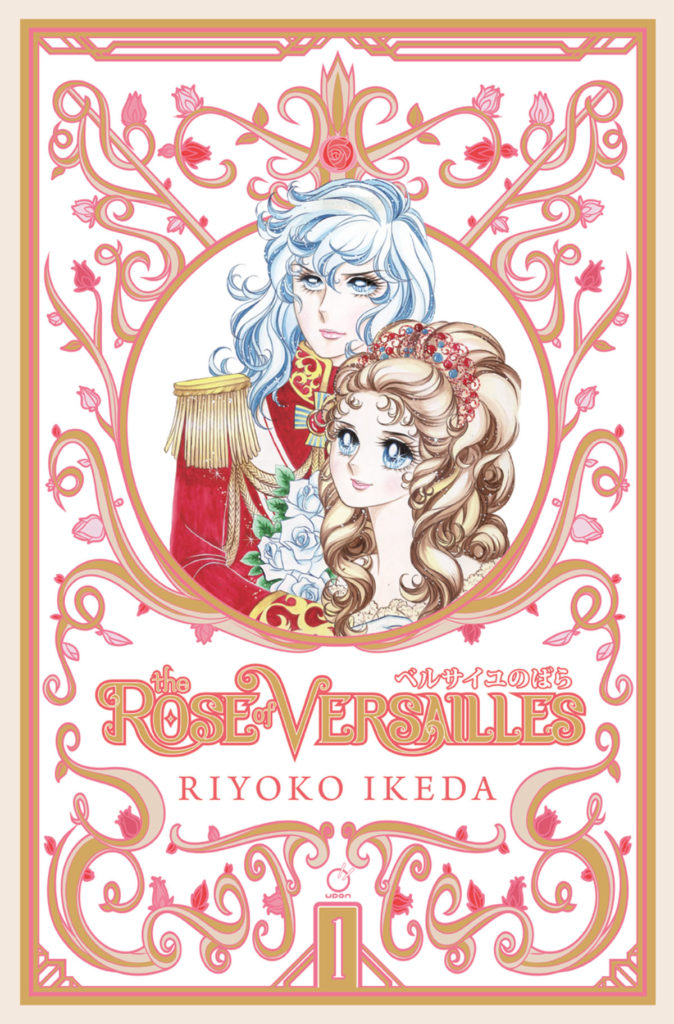
Rose of Versailles Volume 1
By Riyoko Ikeda
Translation by Mari Morimoto
Lettering and Touch Up by Jeannie Lee
Edited by Erica Friedman
Cover Design: Andy Tsang
Published by UDON Entertainment (Print only)
Audio Editing by David Brothers. Show notes by Christopher Butcher
Before we get started:
Hey y’all! Christopher here, and I’m just throwing these up online now because I’m so behind. All errors are my own, apologies in advance. But hey, we’re talking about Rose of Versailles, the great classic manga by Riyoko Ikeda! Here’s hoping the crew vibes with it more than in our last outing into ‘classic’ manga, eh?
Actually we reference it a bunch in the episode, so let’s talk about the fascinating biography of manga-ka Riyoko Ikeda. Here’s the official biography printed by UDON:
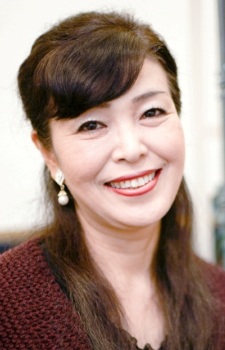
Riokyo Ikeda: Manga artist, author, essayist, vocalist. Started drawing graphic novels while enrolled at Tokyo University of Education (now University of Tsukuba), Department of Philosophy.
This work, The Rose of Versailles, which began serialization in Weekly Margaret in 1972, became the rage across near all of society, a smash-hit that was adapted for the stage by the Takarazuka Revue and into anime and feature films, crossing media barriers and changing the history of shojo manga.
Since then, she has continued drawing manga works based on her deep perception of history and humankind, and written essays and critiques full of insight, to the present day. Other representative works including Orpheus no Mado (The Window of Orpheus) which was awarded the 9th Japan Cartoonists Association Award in 1980, Eiko no Napolean – Eroika (Eroica – The Glory of Napolean), and Shotoku Taishi (Prince Shotoku).
Ms. Ikeda entered Tokyo College of Music, Voice Department, in 1995, and graduated the same institution in 1999. In 2006 she was active as a soprano in theatrical and musical performances.
In addition, her 4-panel color comic strip Berubara Kids (Rose of Versailles Kids) serialized in Asahi Shimbun Saturday edition, is drawing the interest of fans new and old.
Her Official webpage is http://www.ikeda-riyoko-pro.com/
…so that’s the official bio, but man, there’s so much other interesting stuff there.
As David mentions (and supported extensively on Wikipedia) Ikeda created The Rose of Versailles as a story about revolution and populist uprising, after becoming involved with Japan’s ‘New Left’ as a member of the Communist Part of Japan in the late 1960s. At the time, shojo manga was sort of an afterthought in the market, not taken terribly seriously by authors or publishers, and Rose became the entire genre’s first major mainstream critical AND commercial success. You’ve really gotta read the Wikipedia to see just how pervasive the series became in Japanese culture in the 1970s, ESPECIALLY after it got an anime adaptation.
And yeah, the official bio mentions she entered the Tokyo College of Music, but after graduating she became a VERY popular singer, for musicals, operas, and even concerts dedicated to her! She even wrote a whole opera that was performed in Finland. At the end of the month she’s joining a talk at Kyoto University about Marie Antoinette. She’s a bit of a cultural force, on a different level than most of the creators we’ve covered.
Alright, all of that out of the way, let’s jump into the podcast!
01:00 Here’s what UDON has to say about The Rose of Versailles:
Oscar Frarncois de Jarjeyes is a young noblewoman raised as a son by her father. As commander of Marie Antoinette’s palace guard, Oscar is brought face-to-face with the luxury of King Louis XVI’s court at Versailles.Joined by her servant Andre, Oscar is privy to the intrigue and deceit of France’s last great royal regime.
The Rose of Versailles, the queen of shojo manga, is available for the first time in English! This deluxe hardcover volume contains the first 22 chapters of Riyoko lkeda’s historical fiction masterwork.
UDON Entertainment
02:00 Deb re-read it, Chip read it, and David read 400 pages. I read about 350 pages or so. I know that Chip makes an amazing joke along the lines of the dog eating my homework, but yeah, sometimes it’s nice NOT to force a read sometimes. Without putting too fine a point on it, I did actually rush through a few books on the podcast just to be done in time for the podcast, and man, I don’t know that I love how that worked out. So 2023 is me trying to take my time with things… AND also finish the assignment. As we can see from these shownotes being so late, well, it’s still in progress, but in my defence I’m in Canada for the first time in 6 months. 😉
04:50 As mentioned in the introduction, Riyoko Ikeda was in the Communist Party at the time, and it really affected the tenor of these stories, particularly as they continued and Ikeda-sensei started to get more feedback from fans.
I think this manga totally stands on its own two feet, particularly if you read the whole first volume and see the way the story shifts in tone to be less about Marie and more about Oscar, but the Wikipedia was so UTTERLY illuminating that I’m glad I read it after reading this, highly recommended to anyone who dug this episode.
05:45 Early 90s Top Cow pages! What a reference! I’ve been on the internet way too long, but I remember people talking about the ‘manga’ influence on image comics, but I think the majority of those people were actually probably talking about anime, like Joe Mad’s whole deal (if we’re digging in).
Here are the examples that David is talking about. The characters floating on top of panels, overlapping and inset, everyone breaking panel borders, etc.
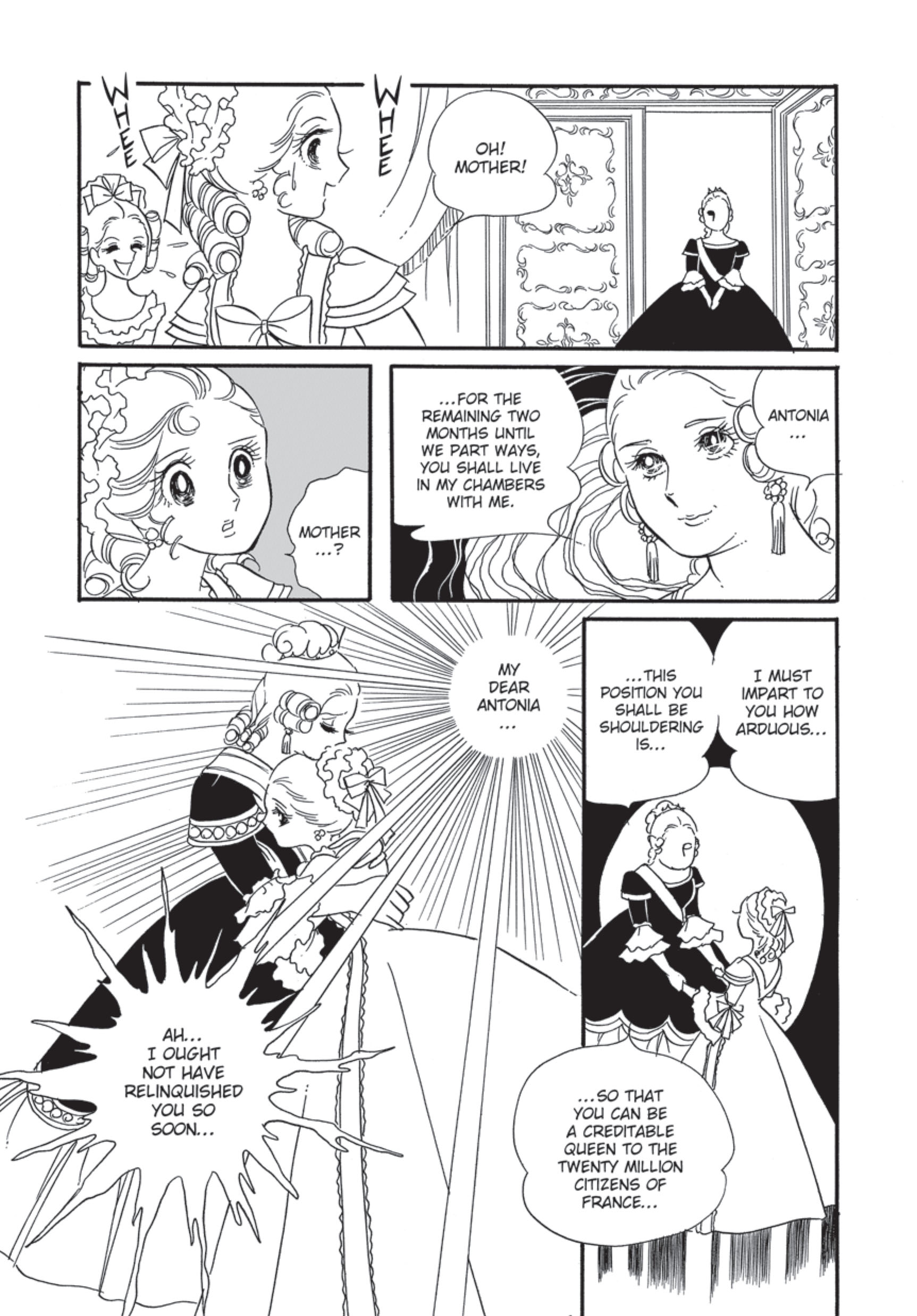
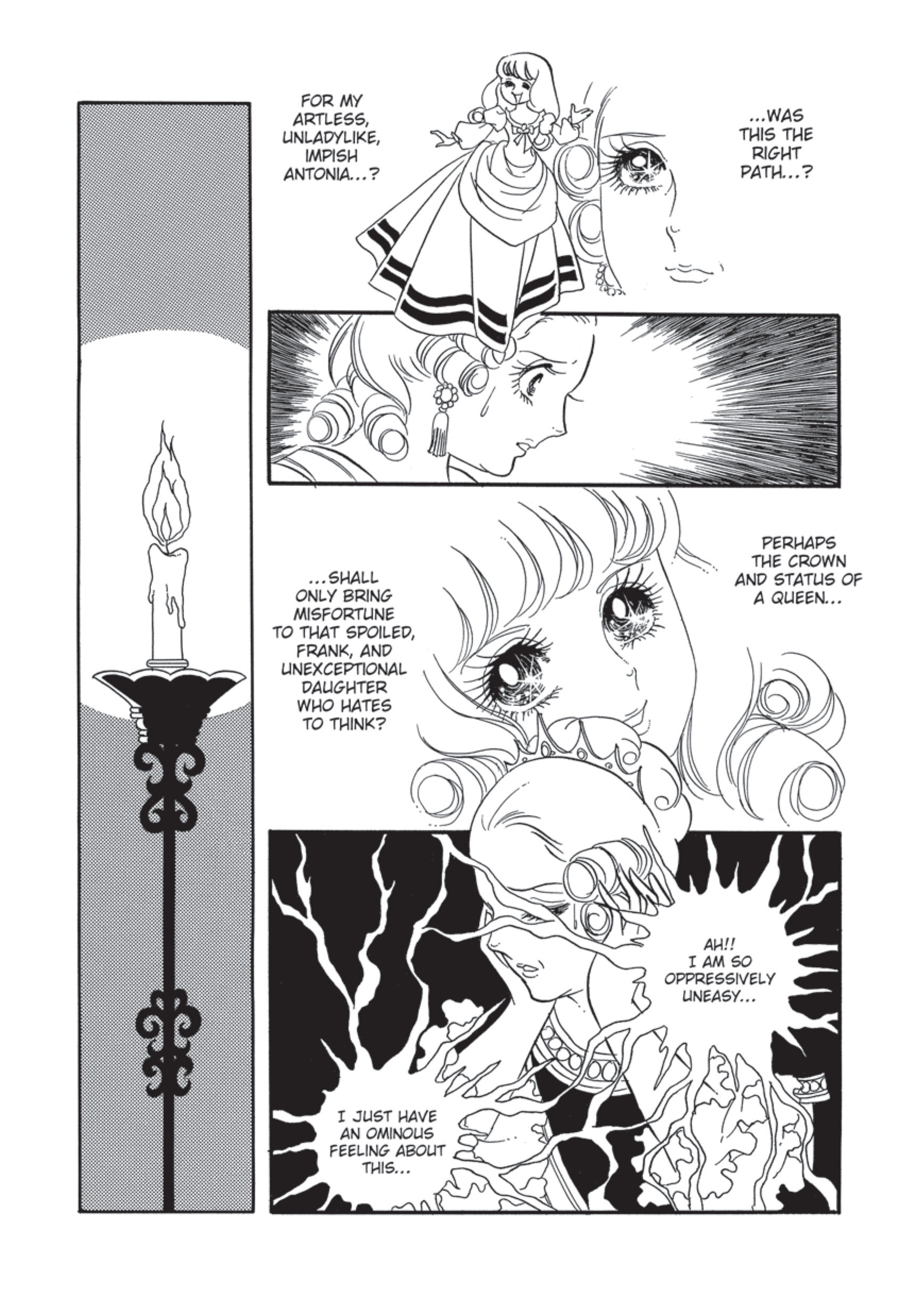
And here’s Top Cow Comics’ The Darkness #1 from Garth Ennis and Marc Silvestri in 1998. You can see there are some definite similarities, although the ling thin panel running top-to-bottom WAS more of a Liefeld thing.
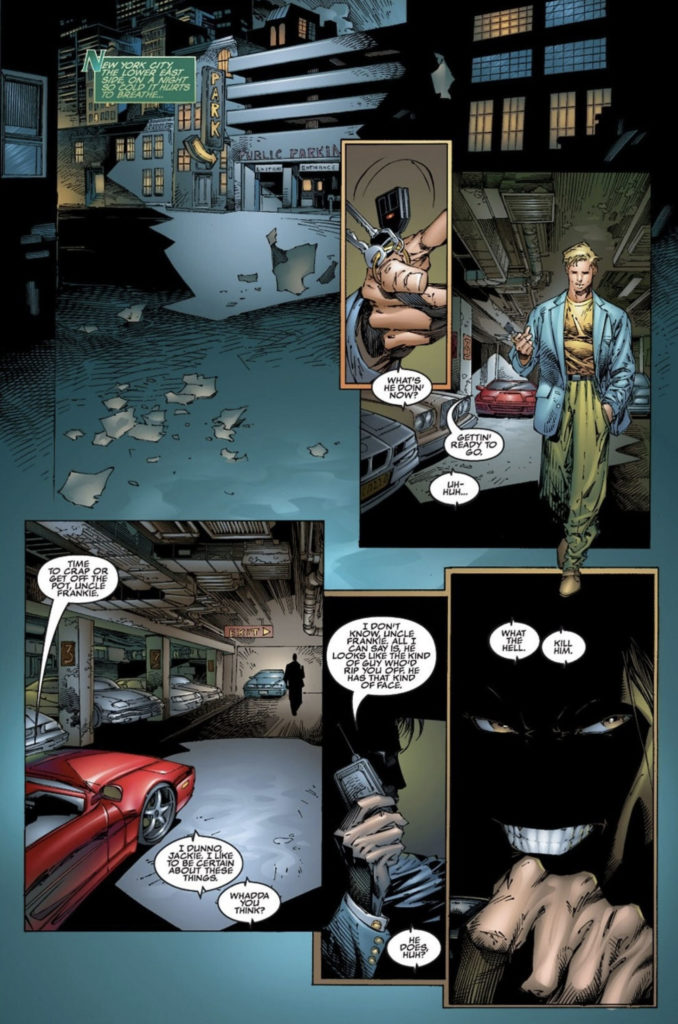
I totally see the resemblance, honestly. That said, Rose is still SIGNIFICANTLY easier to read. Lol.
07:25 Rob has a lot of energy! No for real though. Here’s a couple pages from Prophet #1, 1994 I think? You can see what we’re talking about here, with long vertical panels that draw the eye all the way up and down, characters bursting out of backgrounds, inset panels used as design elements. I don’t love everything Rob’s done, and there’s no denying that a LOT of this was done as a short-cut to not having to draw more stuff, but man, the panel layouts here still look like they’re from the future.
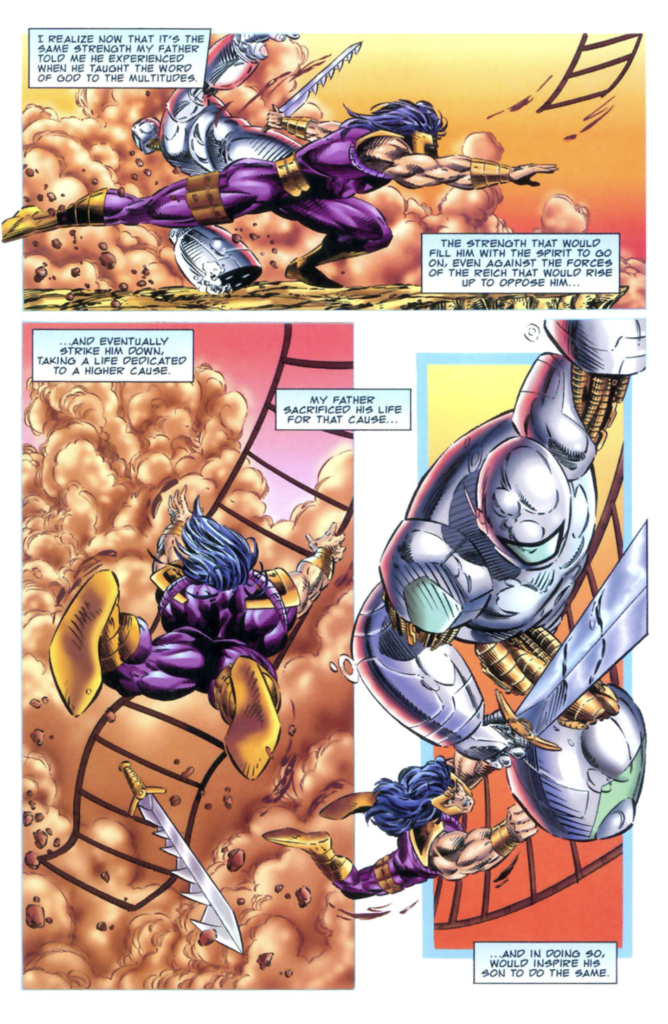
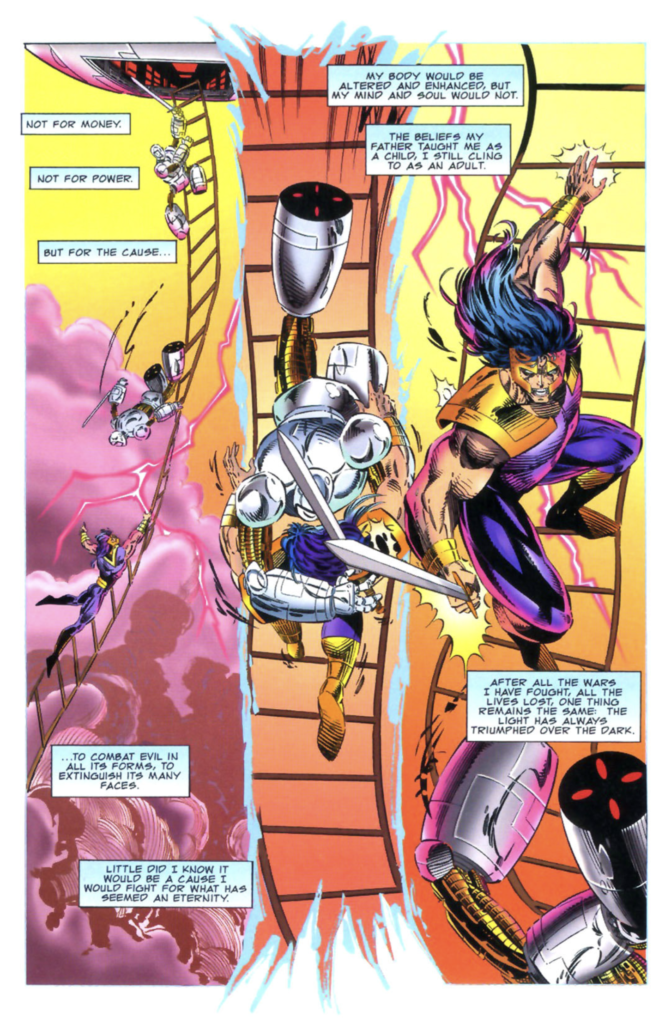
08:52 There’s a lot of emotional storytelling in this series, with characters’ inner feelings depicted by the background art and designs (sort of like the ELECTRICITY! behind Prophet up there. Here’s an example of swirling black mist behind the characters in moments of dread or unease…
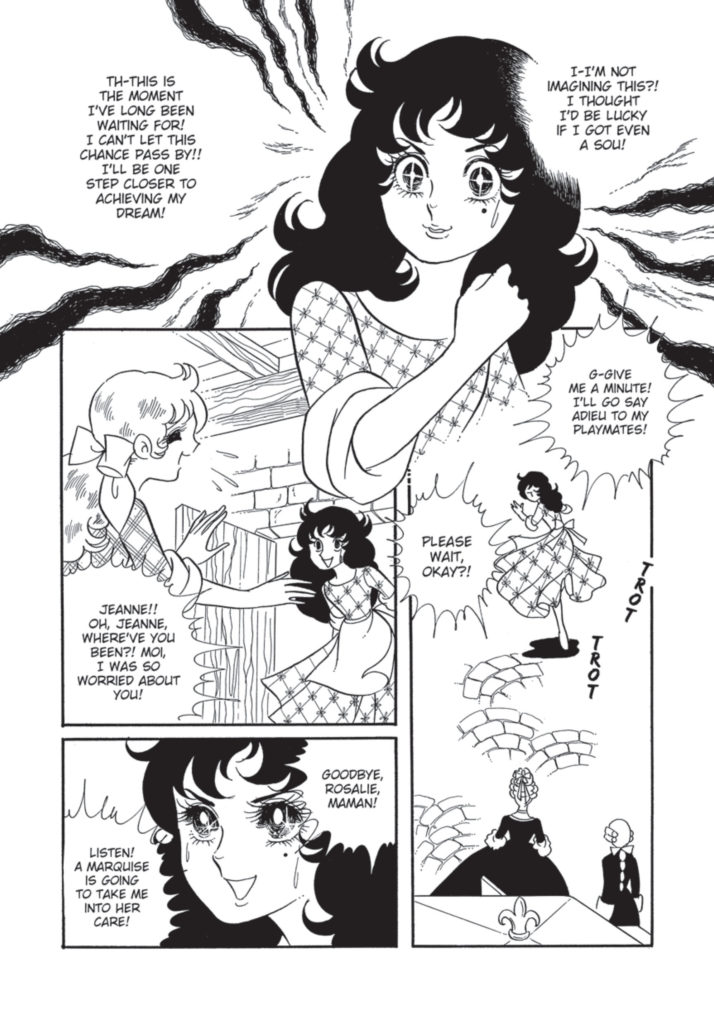
09:10 As Deb mentions, a single chapter of this was translated by Frederik L. Schodt in his 1986 book Manga Manga, one of the foundational texts of manga scholarship (and even basic explanation…) in English. This is a phenomenal book and one of the titles, along with Schodt’s Dreamland Japan, that set me on the road to being the otaku-adjacent lad that I am today. If you’ve been enjoying the podcast and you’re up for reading further about manga, I highly recommend this one. While the book is technically out of print, I was able to find new copies on Amazon at cover price or less pretty easily.
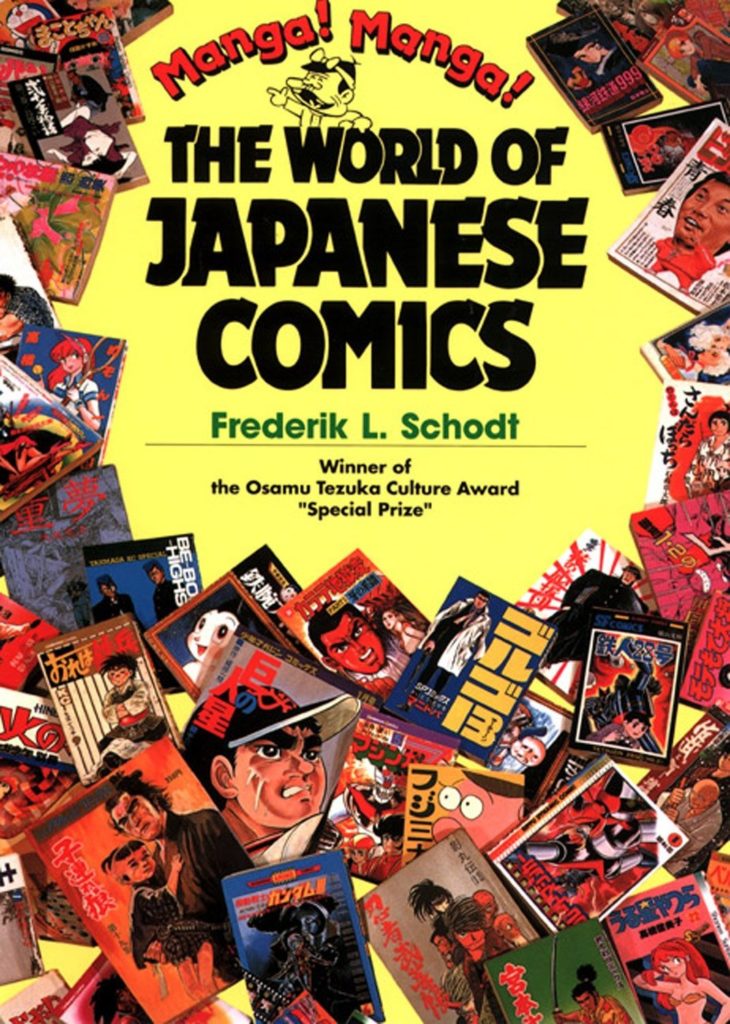
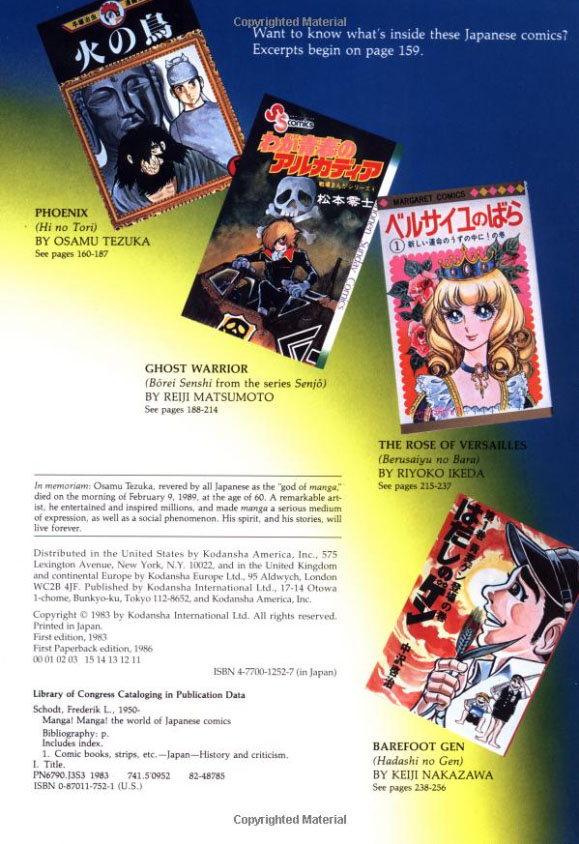
11:30 Deb nails it: The series starts as a retelling of the life of Marie Antoinette, but definitely becomes an Oscar book. According to Wikipedia Ikeda was getting a lot of feedback from the fans, rather than her editors, about the direction that the series should take. It led to things like the fan-insert character, the sweet and timid Rosalie, getting bounced out of the series as Oscar was a much more likable and relatable heroine!
Like, literally bounced out of the series.
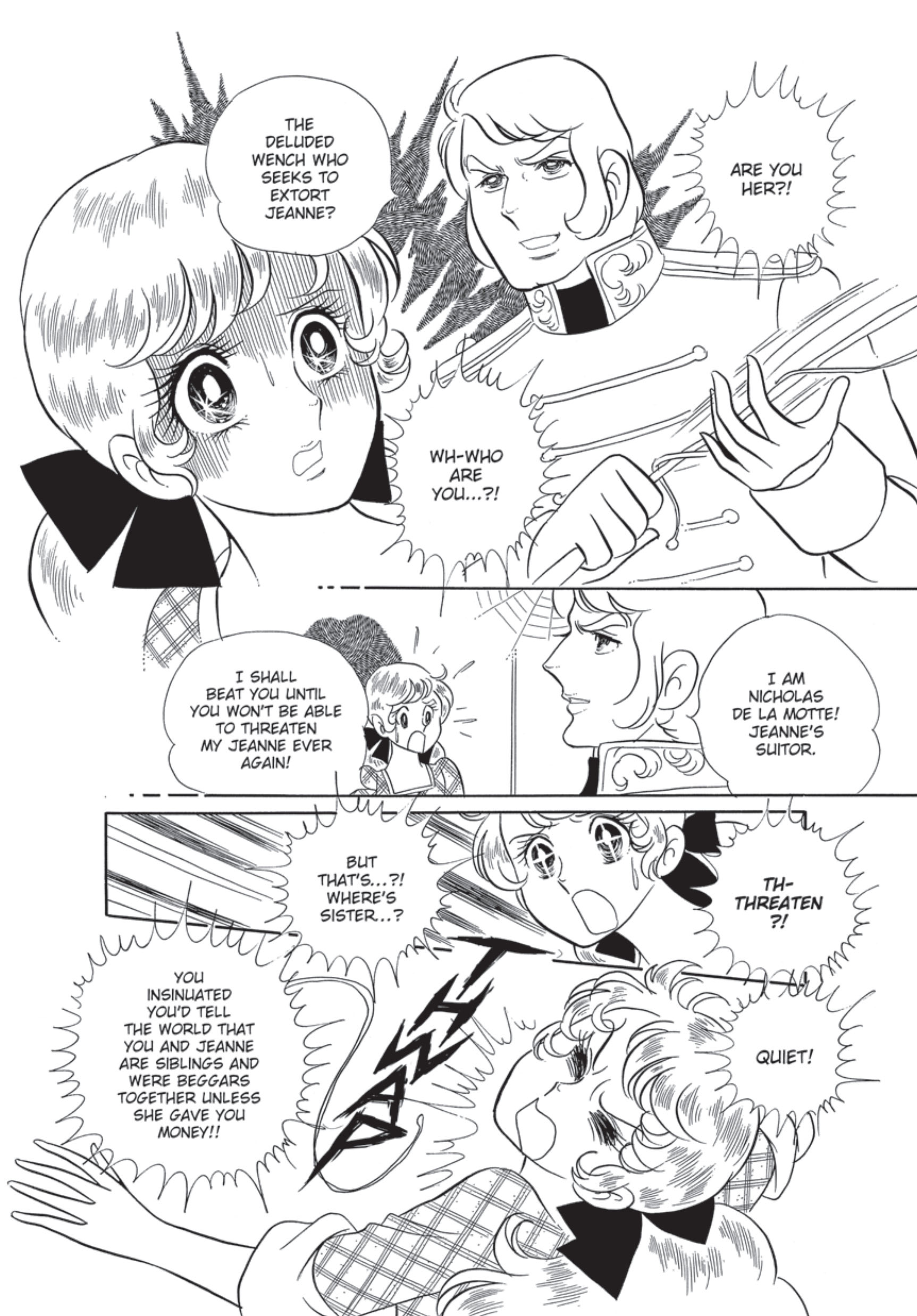
Likewise, Marie was much less interesting as a spoiled and out-of-touch royal than the brave and noble Oscar, and the fans demanded more and more. Here’s that ominous portent I mentioned, but it was from the narrator and not from Oscar. For some reason I thought it was from them, or perhaps it is at a different point? Anyway, we’ll chalk this up to my faulty memory.
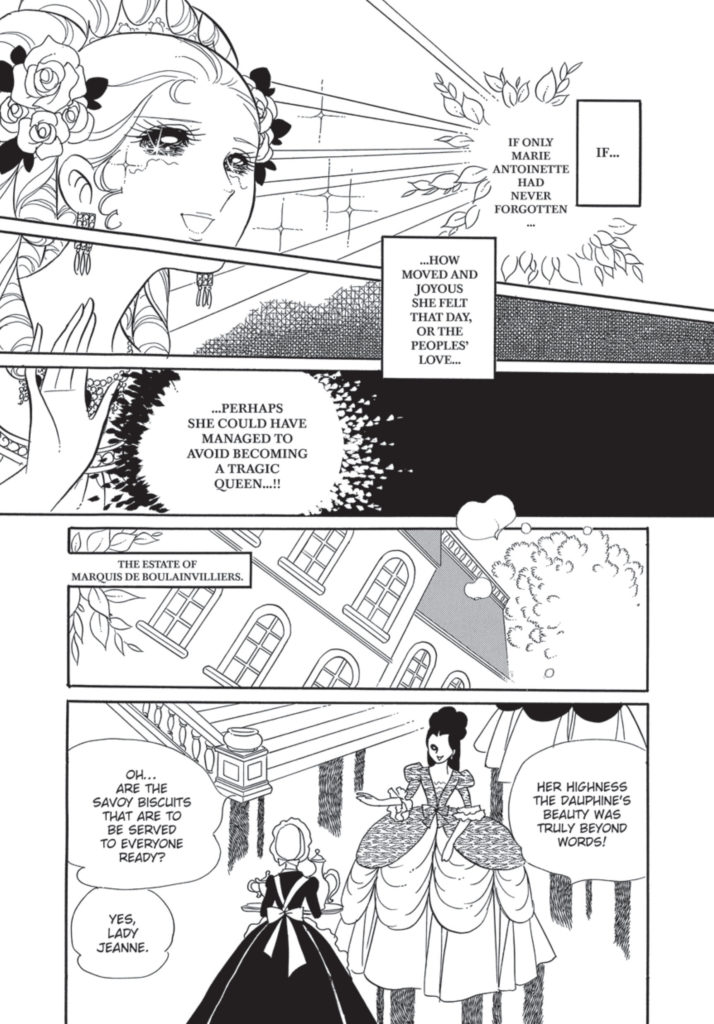
15:09 Spoilers: The kid getting shot? That’s a huge turning point in this first volume, and I think if you’re on the fence about all of the nobility and whatnot, this sequence (and how Oscar reacts and follows-up), not to mention the introduction of Robespiere, should tell you all you need to know about where this is going.
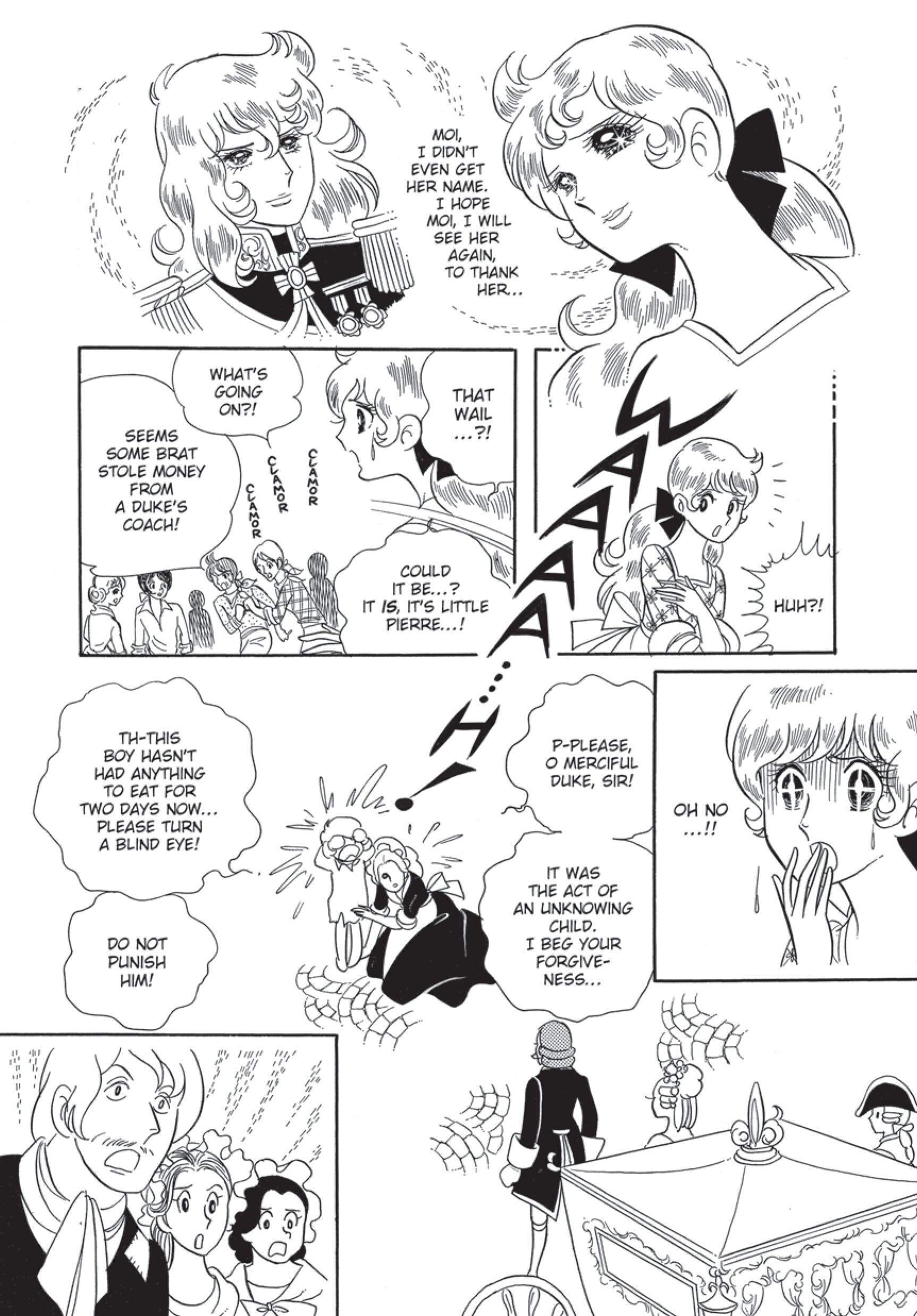
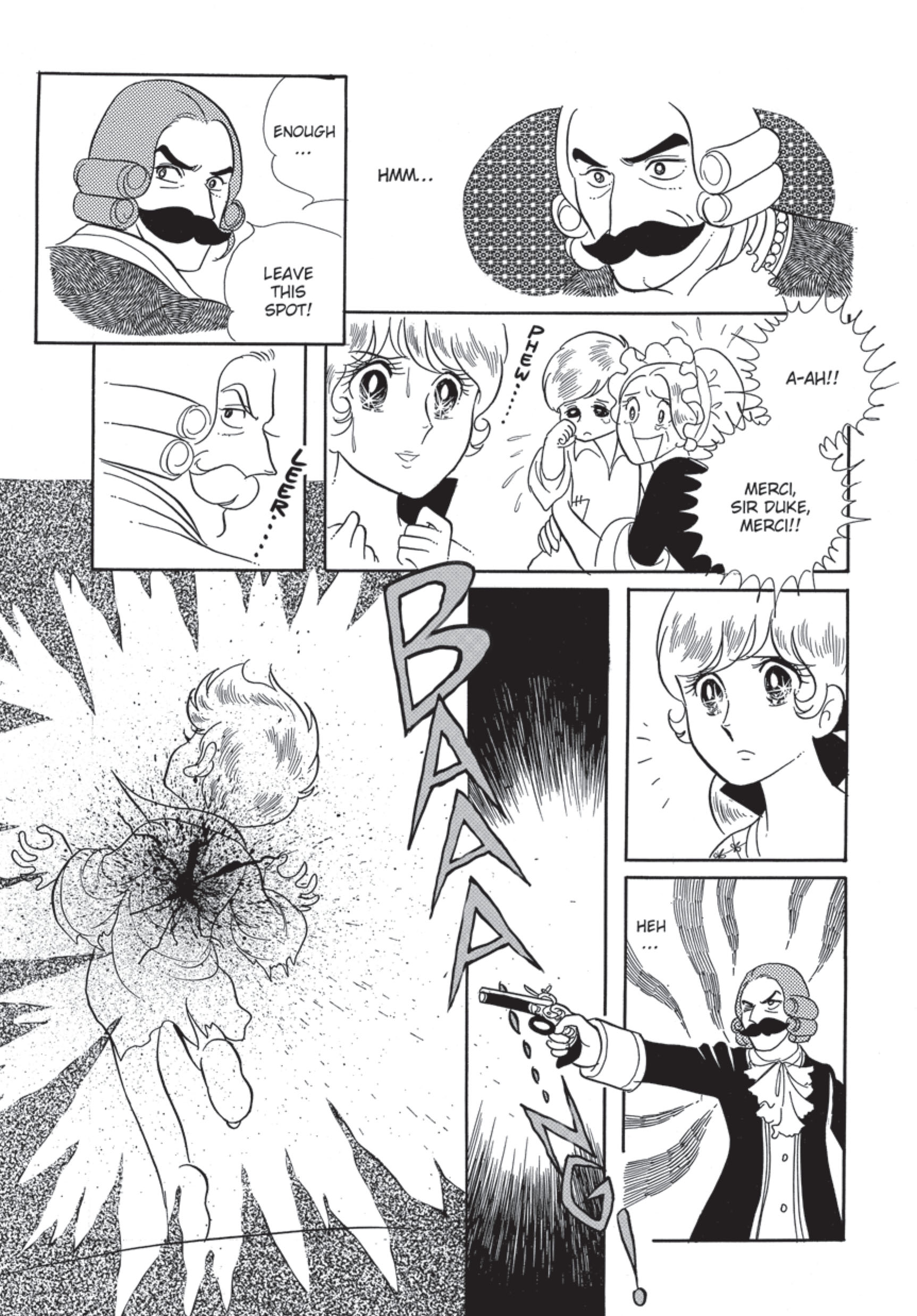
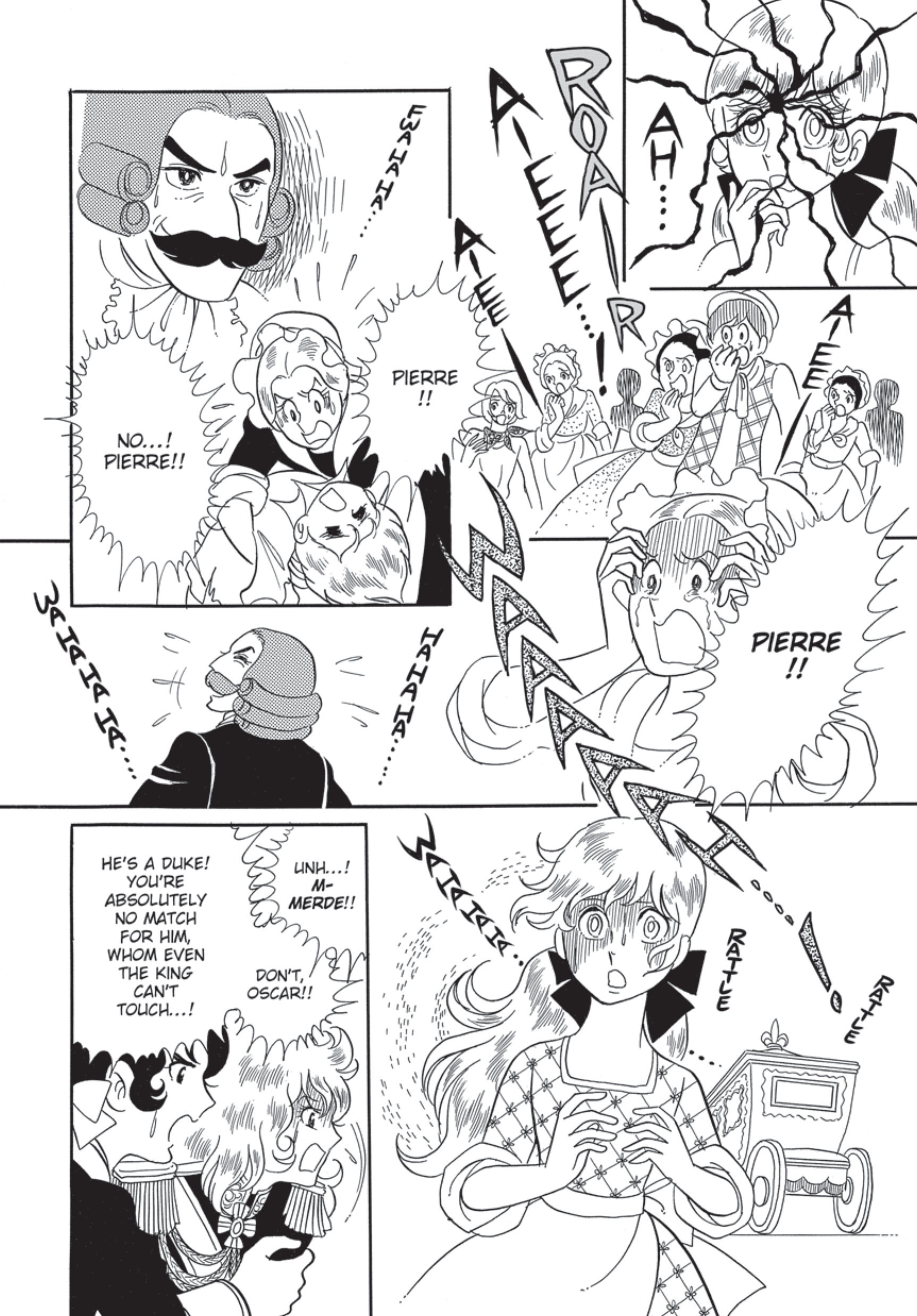
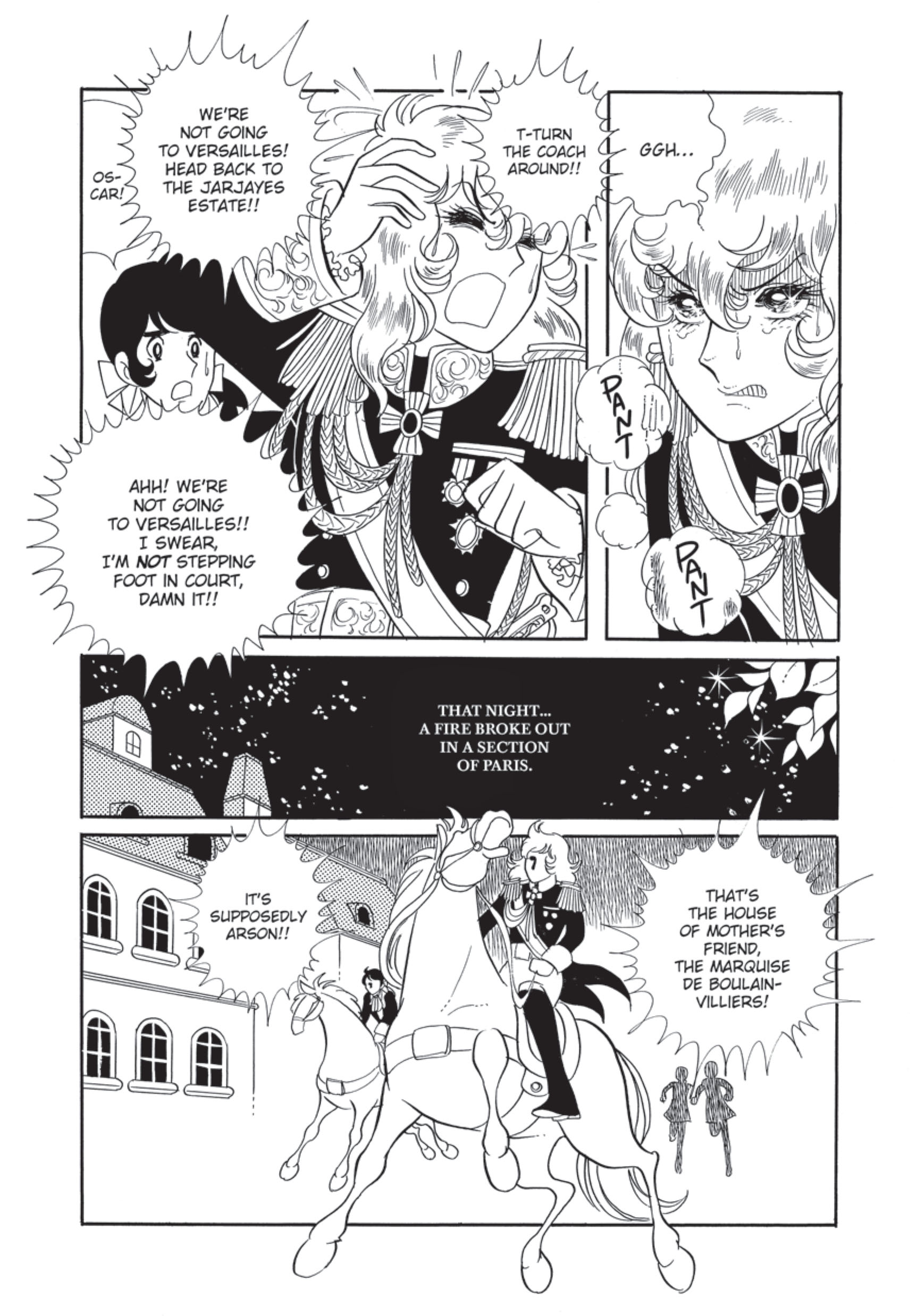
15:38 So yeah, the depiction of the King’s fate to smallpox is gruesome, especially in the context of this very, very pretty manga. Ikeda really pulled no punches with that one.
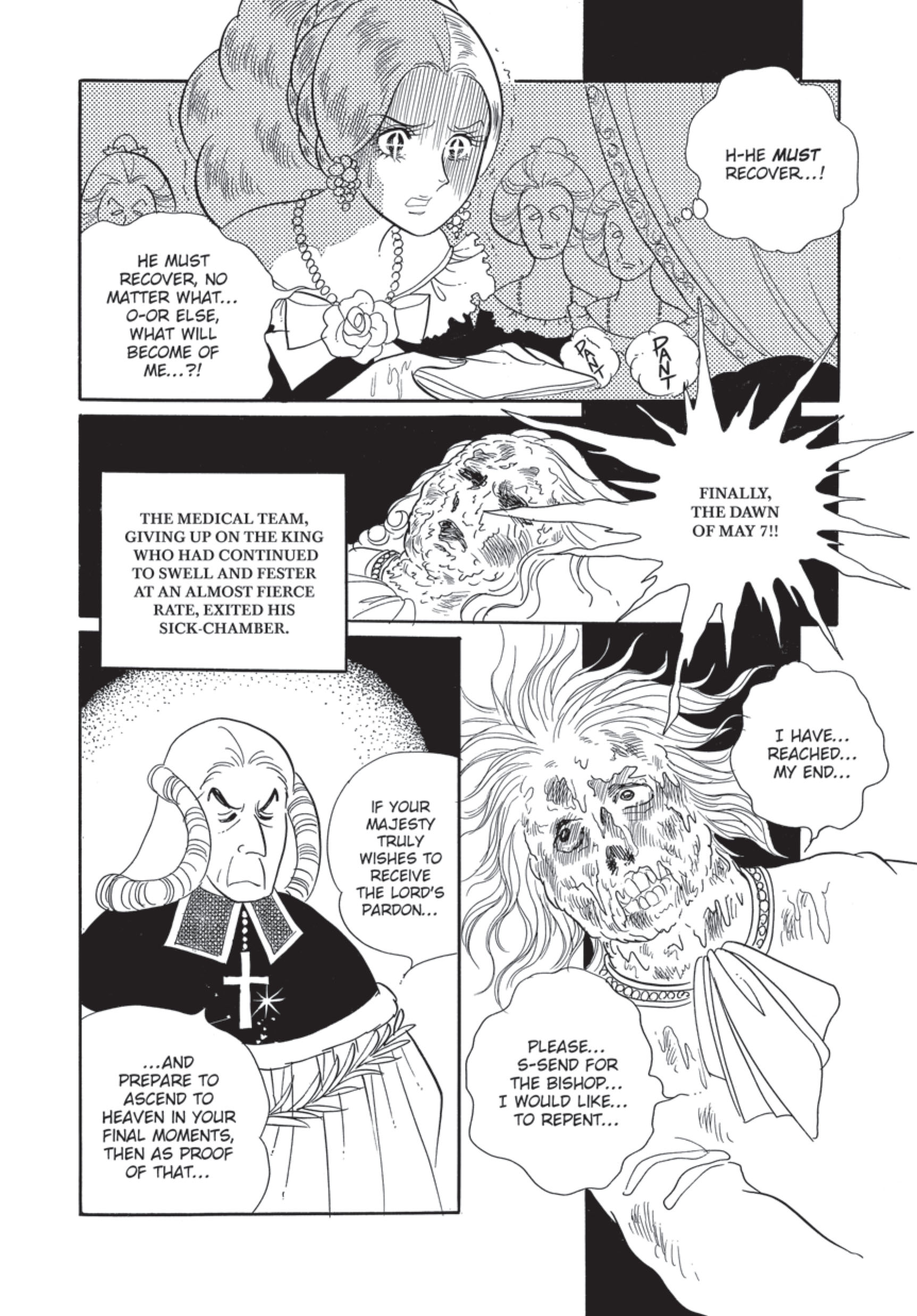
And here’s the sequence I mention, 40 Guards accompanied the King to his burial including Oscar, who is shown to mourn and be sensitive here.
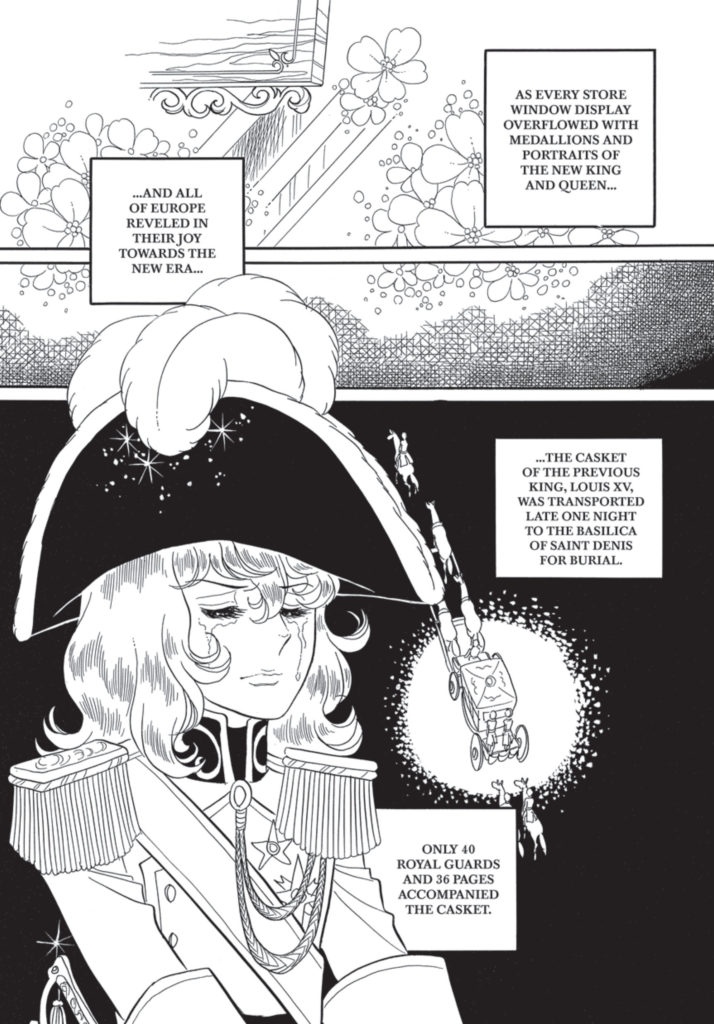
16:30: Mangaka Riyoko Ikeda studied Versailles, the Terror, and French history for two years before embarking on the serialization of The Rose of Versailles. There are numerous real historical moments that are a part of this series, that really do show important scenes from the life of Marie Antoinette and French History. But of course, it’s a bit of historical fiction, full of invented characters that help bridge the gaps in the historical record. I don’t think it’s doing anything that any other piece of historical fiction hasn’t, at least in that regard, but yeah, don’t use this manga to talk about The Terror down at the salon, as Chip might have.
That said, there ARE actual adaptations of the life of Marie Antoinette in Manga form, although not yet translated into English. Here’s the Shueisha biography of Marie Antoinette, next to its French translation.
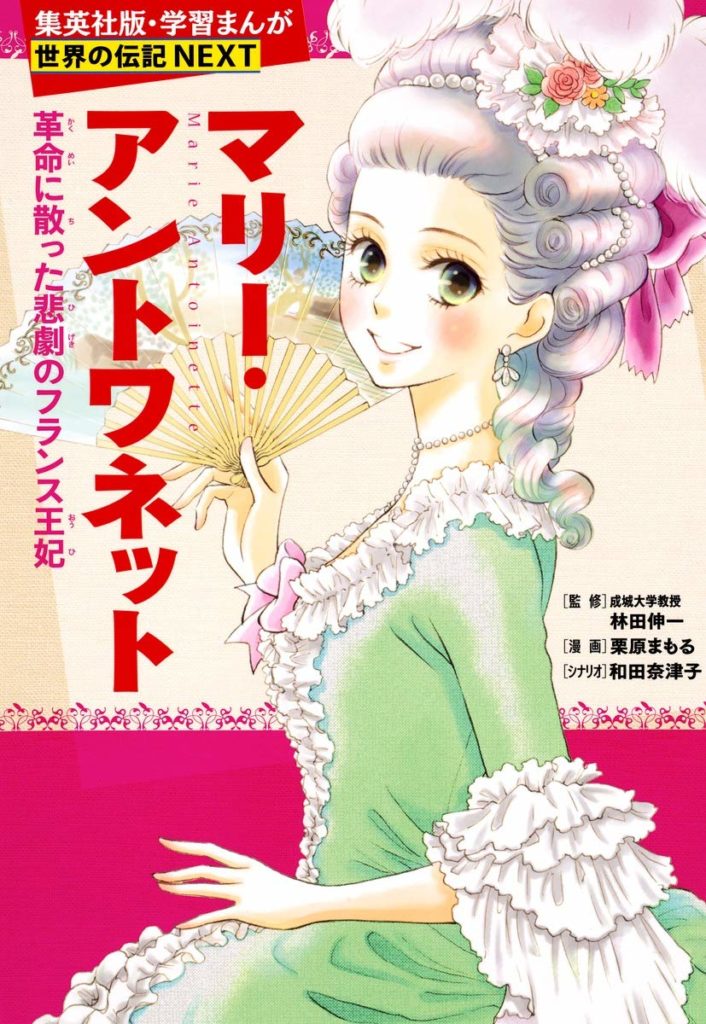
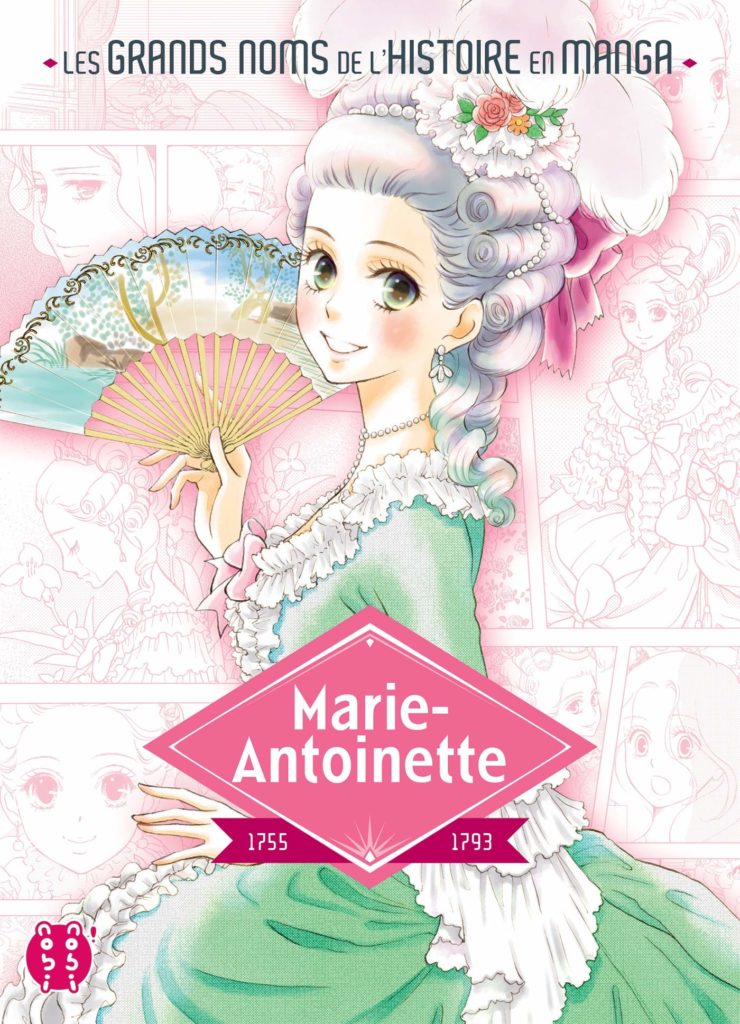
19:10 Yeah, the whole handling of the role of Countess du Berry as the King’s mistress is really interesting, because it’s simultaneously portrayed as just and good, but at the same time intensely problematic and almost causes a war. In the 1970s the women’s liberation movement was changing some of the stigma around sex work, and honestly it’s not clear how Ikeda-sensei intends this section to be read, this ‘rivalry’, as even Marie’s mother realises her error, and yet, there’s nothing anyone can do because they’re trapped by their upbringing, by their station, by their choices.
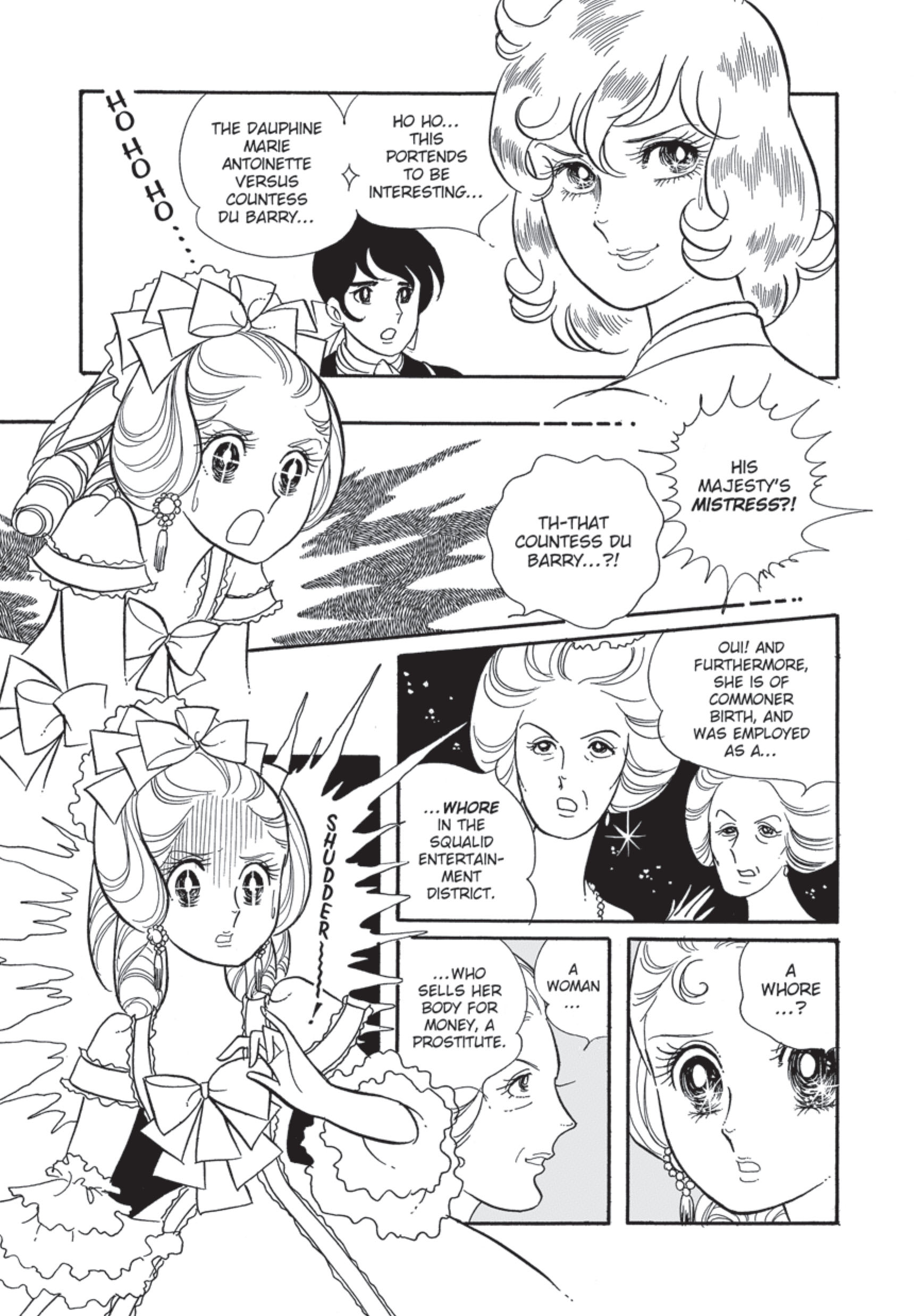
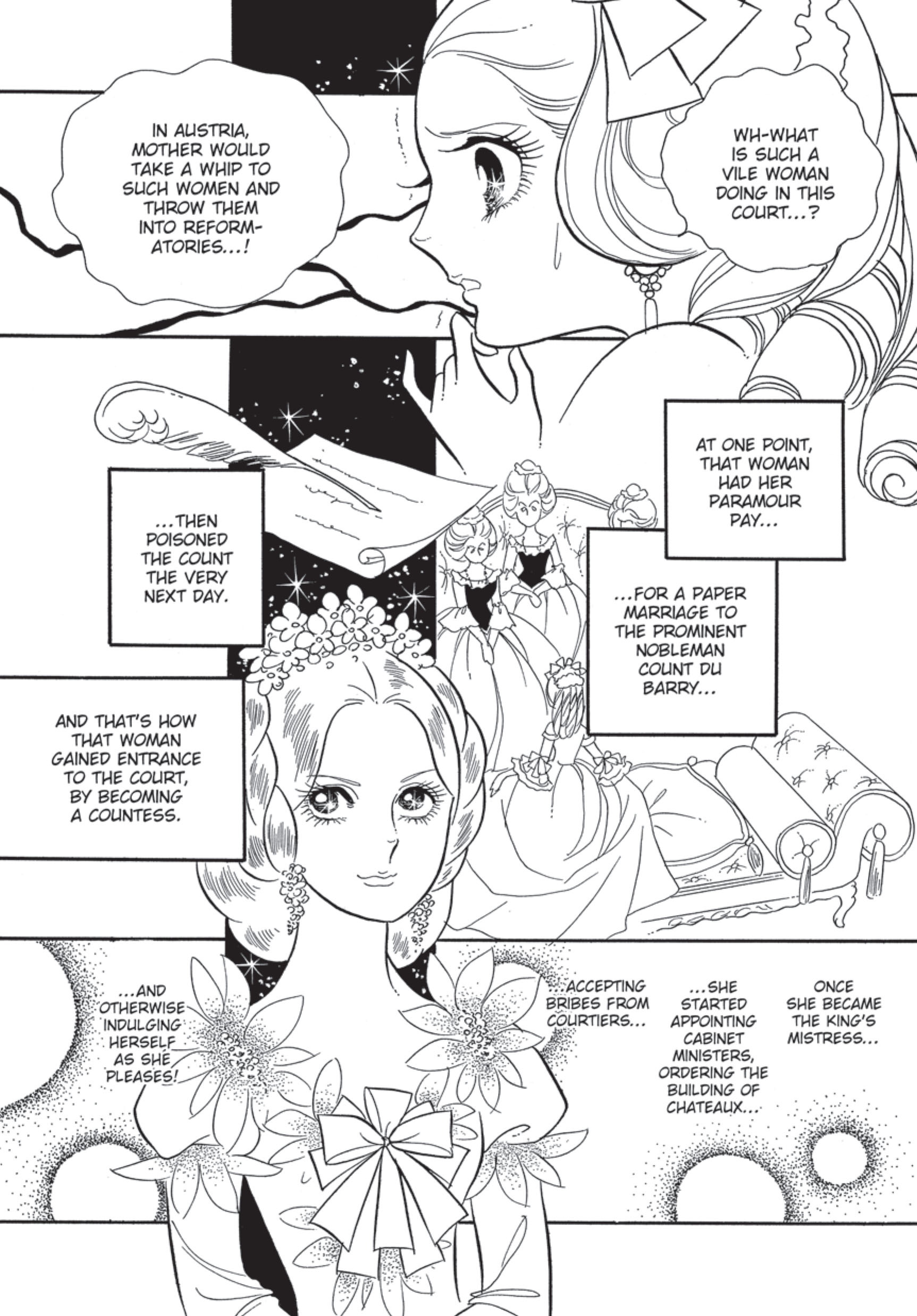
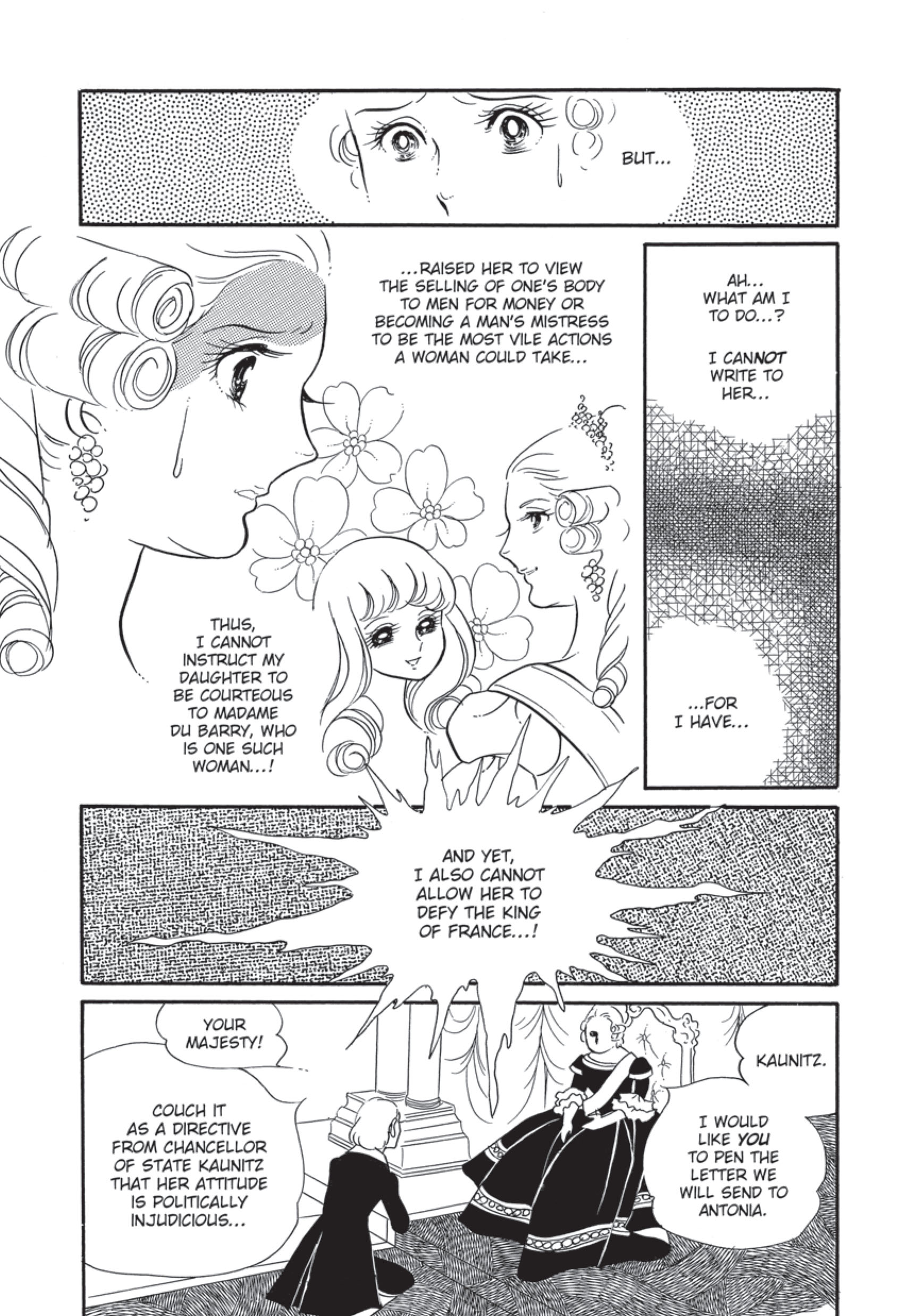
Also, just to reaffirm: Sex work is work, it should be decriminalized, full stop.
22:30 Meanwhile, back to the art (which I love!), while the dresses and filigree and and whatnot are all beautiful, we LOVE the slapstick touches, the cartooniness, that propels the narrative. Here’s an example of the Looney Tunes spinning legs:
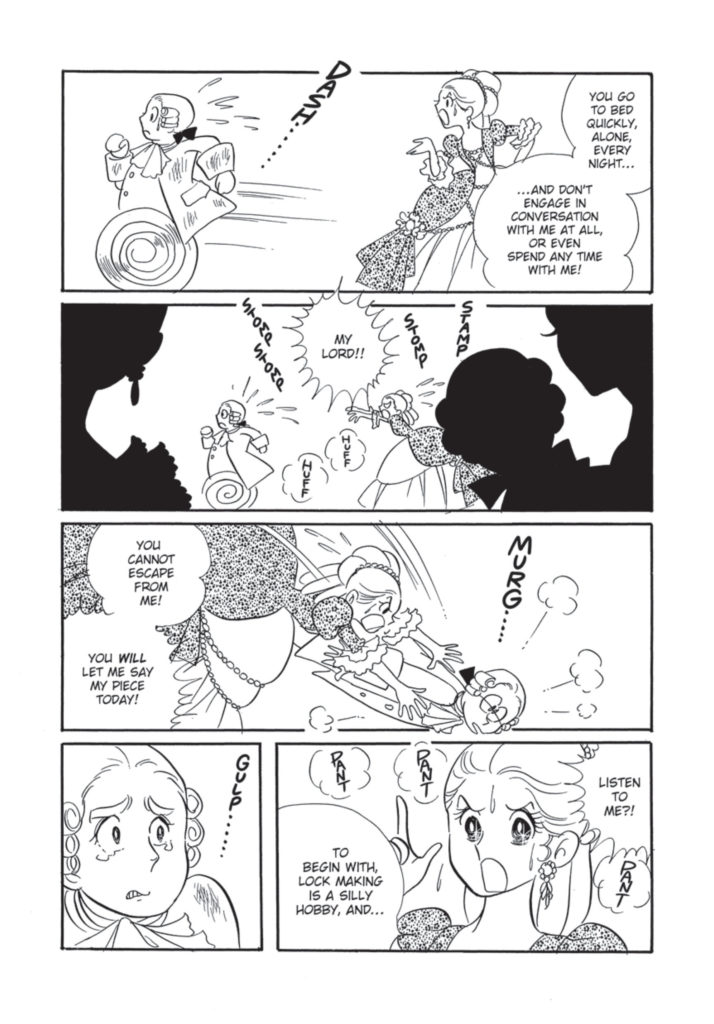
Here’s some great abstracting with rough outlines from page 394:
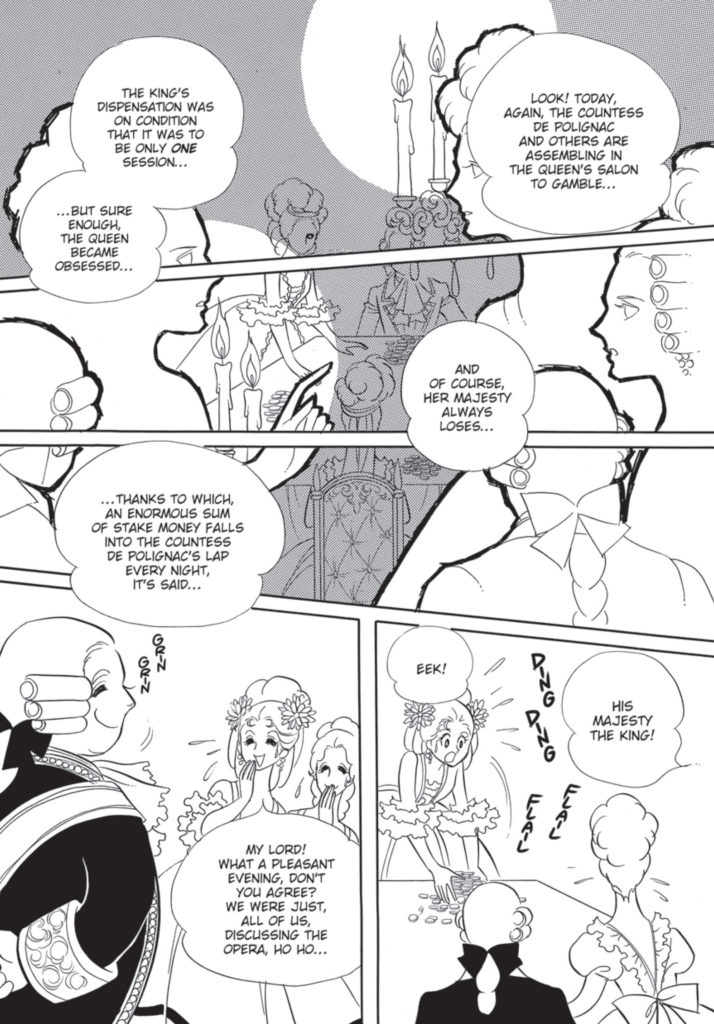
And here’s some full-on “I can’t believe this shit” slapstick from page 395:
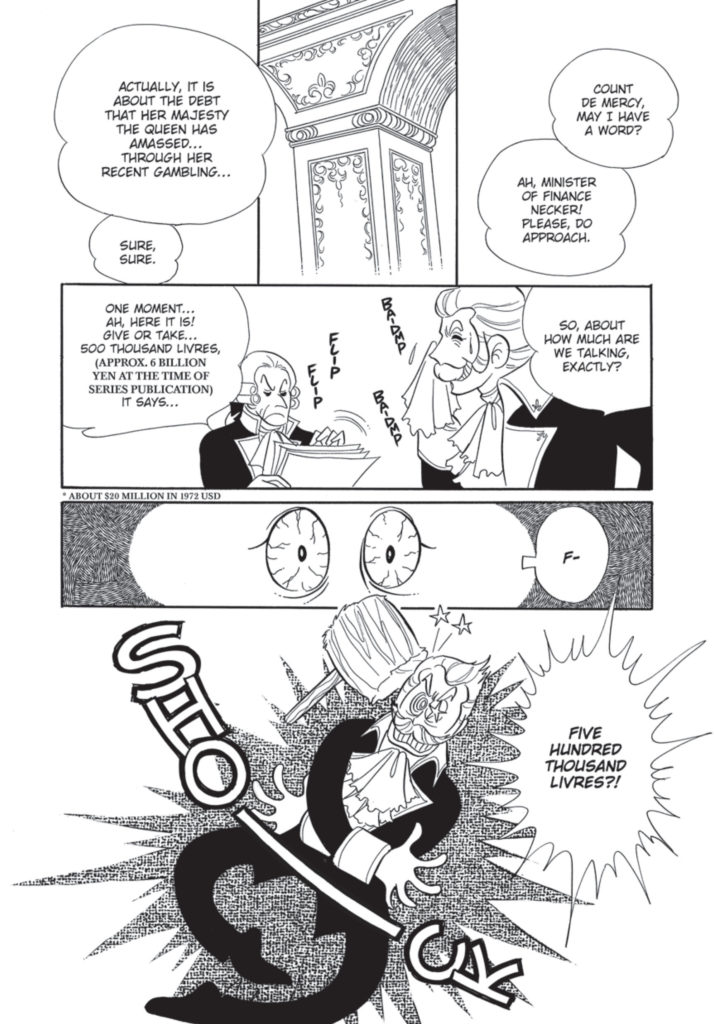
24:50 Deb’s partly-remembered quote “I’m here to chew bubblegum and kick ass, and I’m all out of Bubblegum.” comes of course from the mouth of “Rowdy” Roddy Piper in the truly phenomenal, hyperviolent cult-classic film They Live.
I can’t believe our episode on The Rose of Versailles references Mid-90s Top Cow comics and They Live. It’s… It’s pretty great.
25:15 Much like Tezuka inventing shojo manga back in the day, in the 1940s the all-star duo of Joe Simon and Jack Kirby invented romance comics with Young Romance at DC Comics. I’m probably a little hard on them here, I actually love Romance comics and there are some solid stories in there, but a lot of weird missteps and Kirby’s art doesn’t always fully mesh with the subject matter. If I’m remembering correctly, there’s a story in Young Romance #1 where you see through the eye-holes of character, from inside their head, that’s really… Weird. Very Weird. Can’t find a sample online and too cheap for DC Comics’ app, so instead check out this review of the Simon & Kirby Young Romance collection by Kayleigh Hearn over at WWAC.
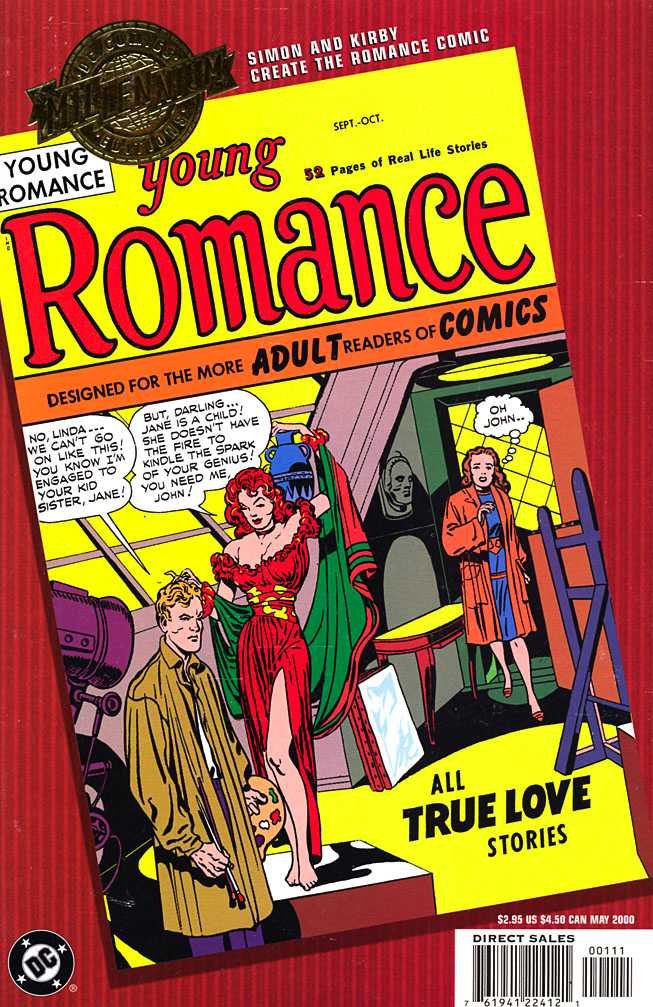
26:00 The ¾ overhead of Oscar seeing Marie, where he’s just like “What other panels? I don’t care, I will stand directly on them.” But it’s such a striking, beautiful page.
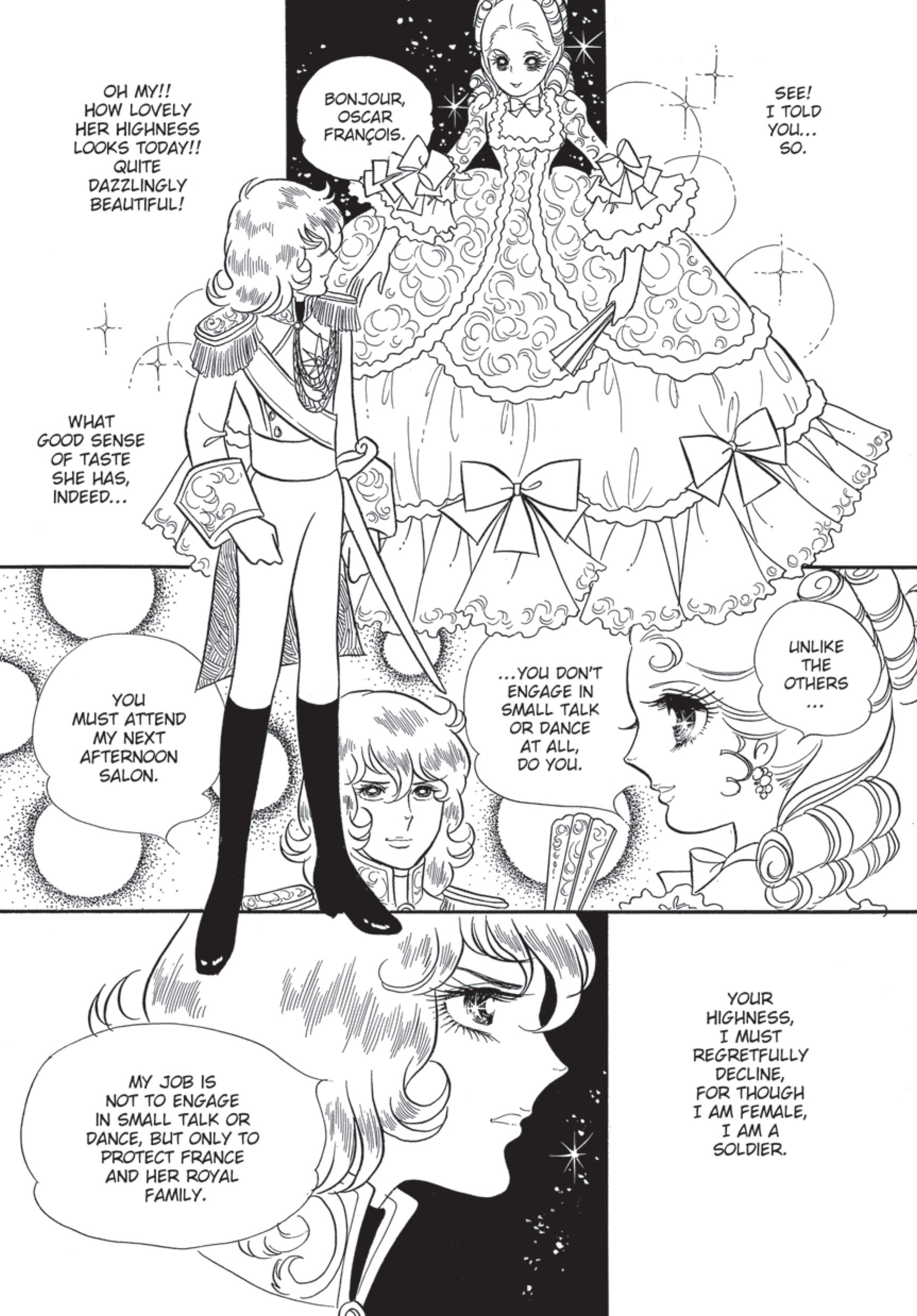
26:25 The drawing of Madame Duberry where she is drawn realistically, but her face is cartoony and extreme, with fire in the background, shows off another really solid cartooning trick that Ikeda-sensei employs, and it really works phenomenally throughout.
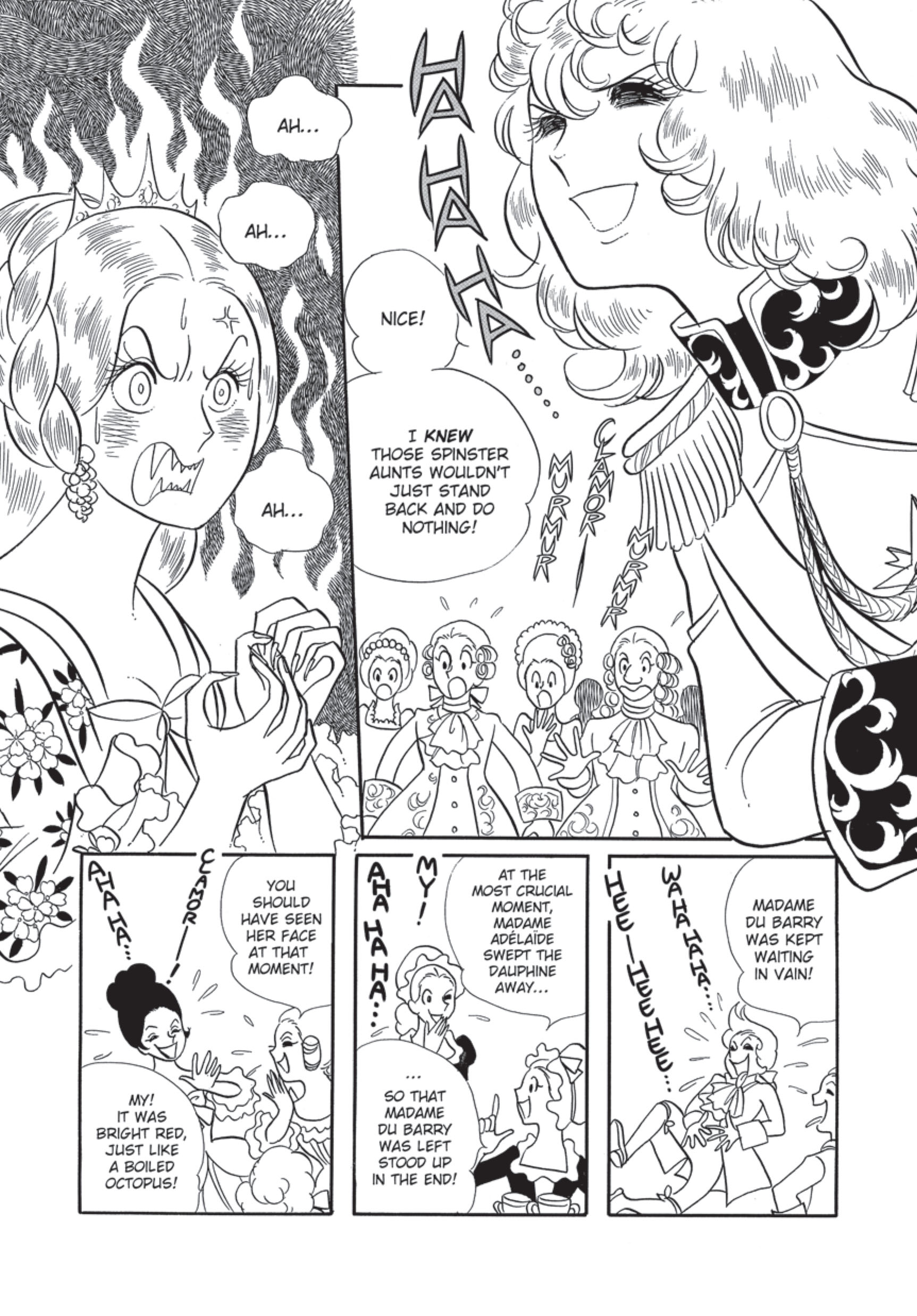
29:30: I also went to see that event, and it was really… complicated. They had a photo policy that was very strange and inconsistent, including not allowing photos in the gift-shop, if merchandise. In fact I was taking a photo of the _outside_ of the gift shop to show it was busy, and a guy ran out with his arms in an X in front of him and blocked me, it was… fucking bizarre. Anyway, here’s the photo of the display case with the different international editions, UDON’s is fifth from the left. This photo may or may not be illegal, so if I die under mysterious circumstances, take it up with the Roppongi Hills staff.
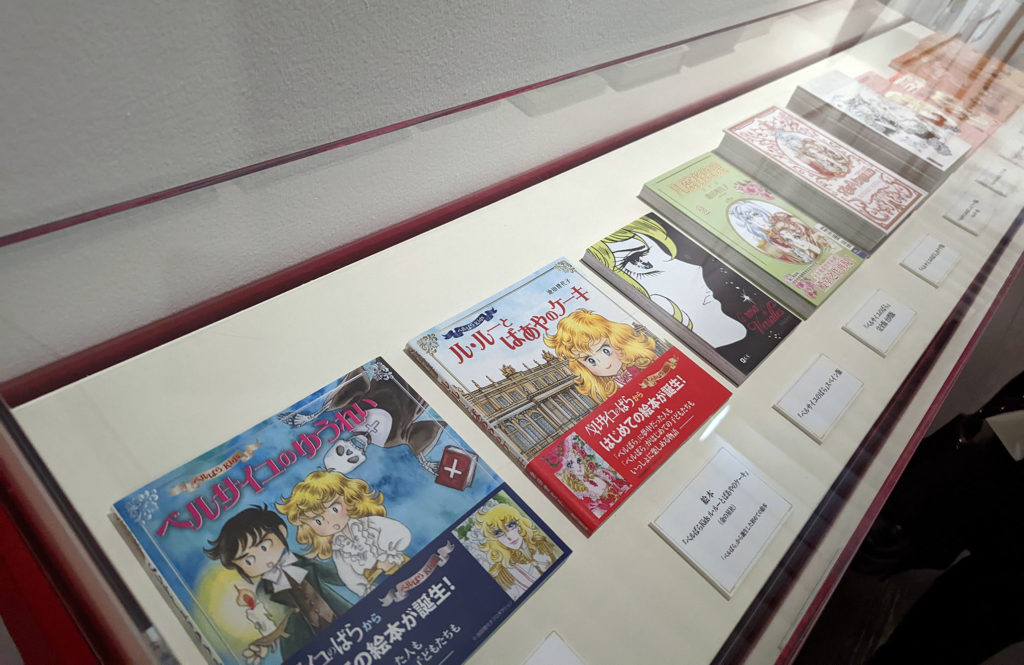
30:30 It’s true, that Ikeda-sensei’s work gets much more confident, emotive, and (dare-I-say-it) mature as the series progresses. While I don’t have any pages on hand from Volume 4, which features the Reign of Terror, this page from near the end of Volume 3 is really superb.
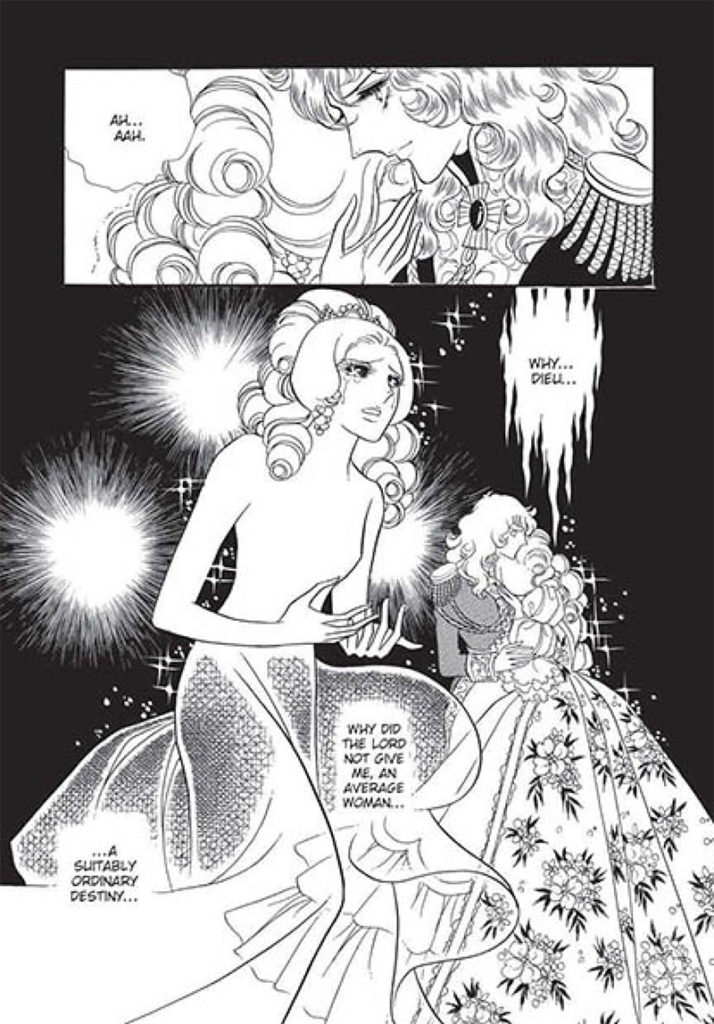
31:30 The film I was thinking of directed by Sofia Copola is just called Marie Antoinette, not sure why I thought it had a different name. Anyway, I dug it, here’s the trailer.
36:00 More on the Prince archetype! As mentioned previously, we first encountered the Prince archetype in Monthly Girls Nozaki-Kun, the comedy about shojo manga we covered (you can find it in the search bar, hotlinking is a bit tough right now). Well that prince archetype, this book is actually one of the originators of the archetype, alongside the actual origin in Osamu Tezuka’s Princess Knight. We actually just encountered this on recent episode, Even Though We’re Adults Volume 2 directly references it even! Look at us, recognizing stuff from episode to episode.
38:26 Leotards and Androgyny…! Think of these images as a mood board:


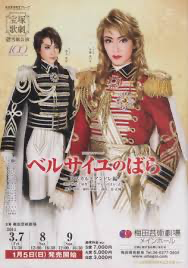
EDIT: Confidential to the comments section: If your French pants are as tight as leotards, they’re functionally leotards. Don’t lets start the “are jeggings pants?” debate again.
40:50 Deb’s really smart about this, it is an important work and I’m so personally glad that everyone loved it. One of the questions I meant to ask Chip and forgot to, was to ask him how he felt this classic manga compared to some of the other classics that we read, like Kamen Rider or Devilman. But then I realized I’m allowed to talk to him NOT during the podcast! So, uh, I just asked him:
I think it just felt like there was more thought put into it. Like the author wasn’t treating it as disposable entertainment.
Like, Devilman and Kamen Rider were fun, but it just felt like every few pages they were like “okay what next?”
Chip Zdarsky
There you have it!
42:20 Here’s we’re talking about sketchy anger lines around characters, meant to really visually differentiate the characters from their surroundings (who are all drawn so deliberately ‘cleanly’ that the scratchy, thick lines really make the characters pop). I couldn’t find the specific example of Oscar David mentioned, but here’s two examples to show what we mean.
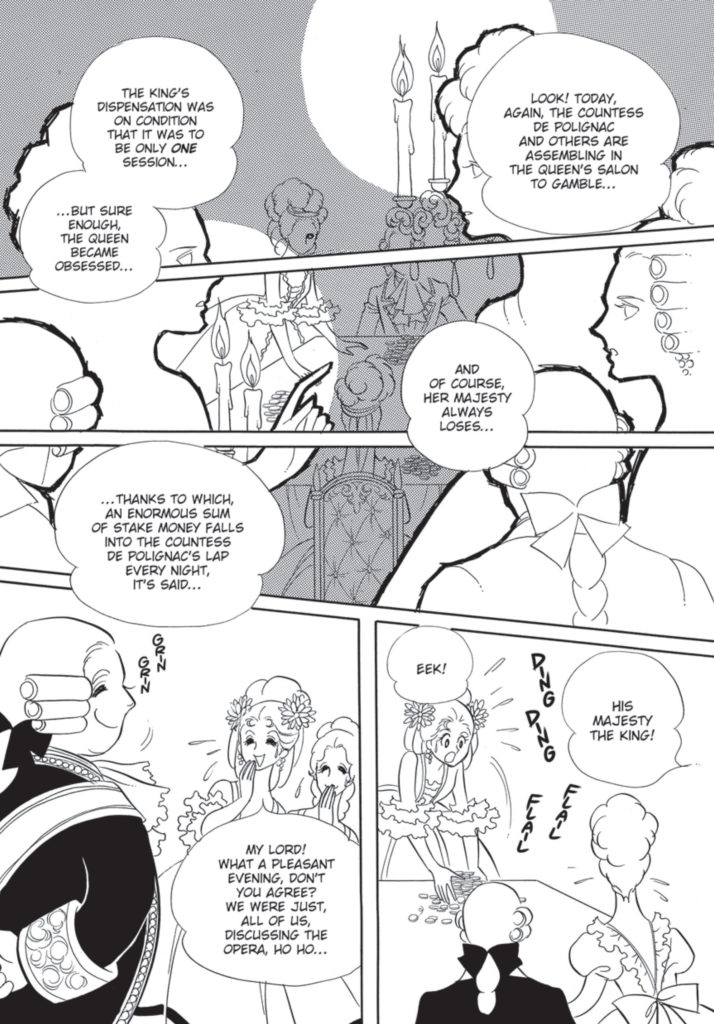
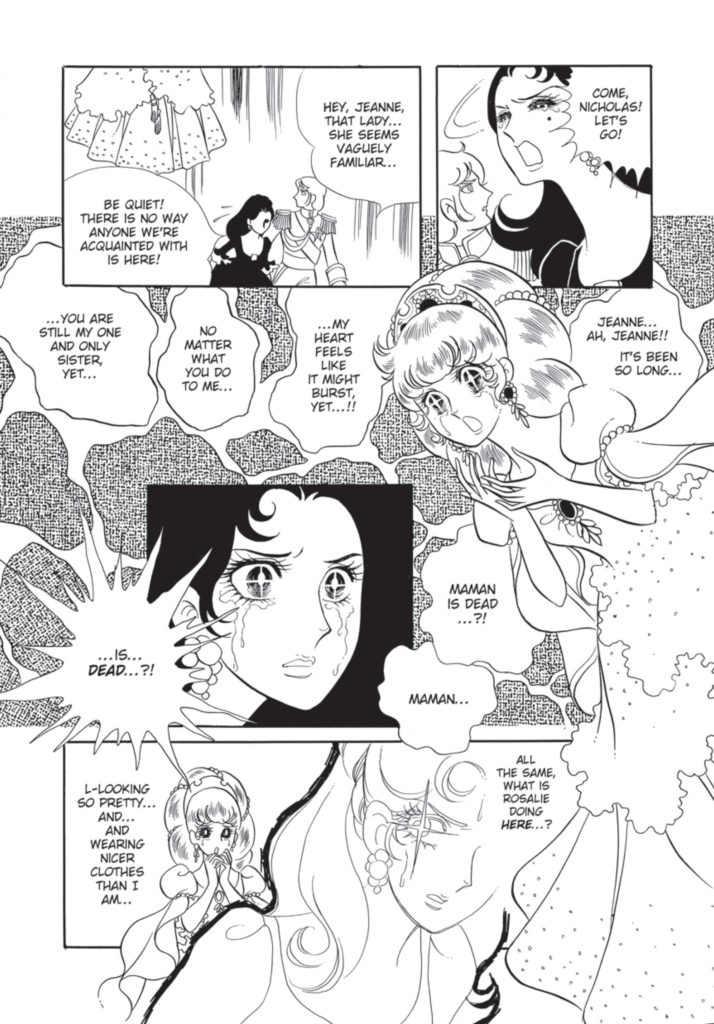
Using a similar technique, David mentions Marvel Comics artist Rod Reis and his work on New Mutants, with characters getting chunky outlines. I gotta be honest, I don’t really see it, maybe I’m not finding the right panels or images? But the work is really nice. Check it out:
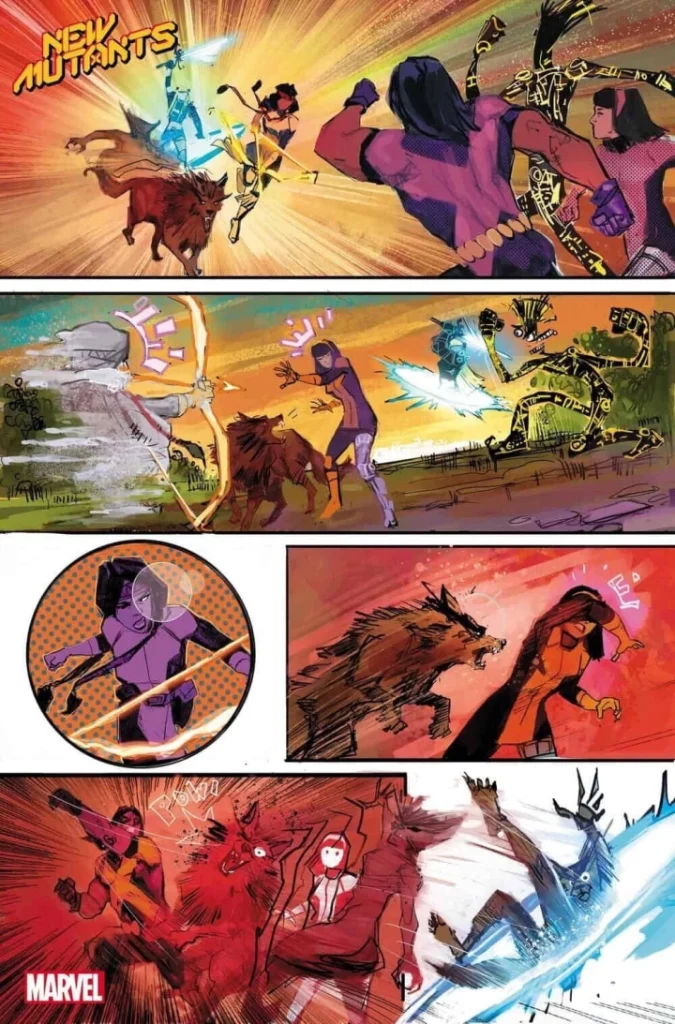
43:30 Deb mentions the moment when Jeanne and her Sister see each other again for the first time, and this sequence is just insane.
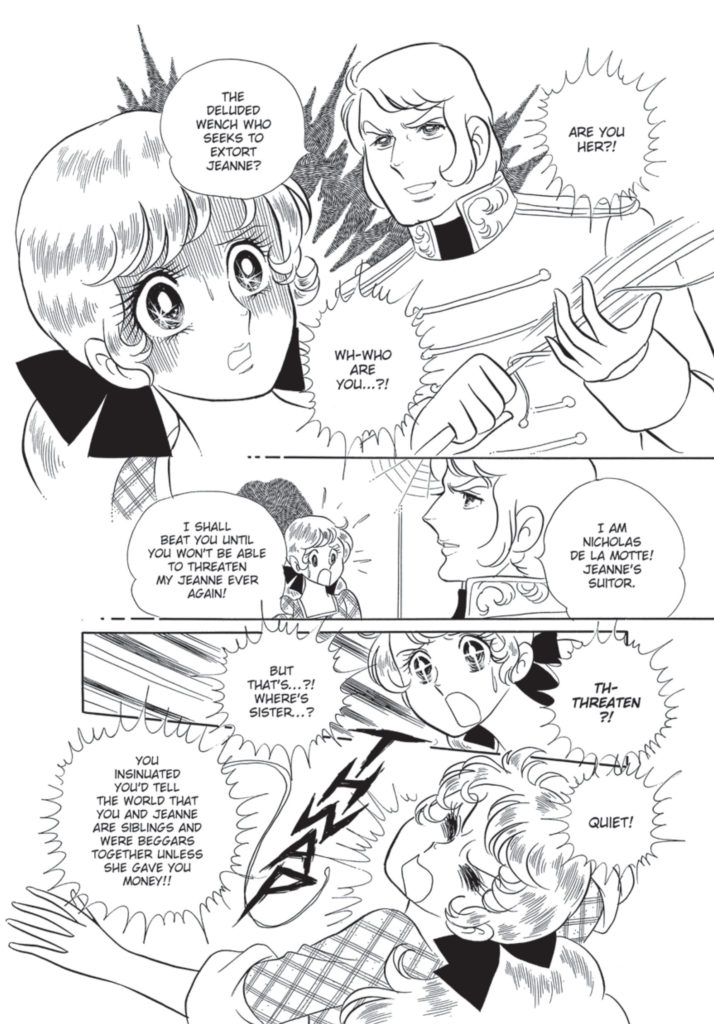
45:00 While we’re obviously biased, working with UDON, I have to say that their edition of The Rose of Versailles might just be one of the nicest manga editions I’ve ever seen. Hardcover, glossy paper, all color pages reproduced in color, a very beautiful cover treatment, tons and tons of bonus material, honestly this is a truly immaculate collection of manga. I’m sure there are nitpicks though that I haven’t seen, but I’ve seen the ‘fancy’ versions of this material here in Japan and, to my eyes, the UDON editions are better.
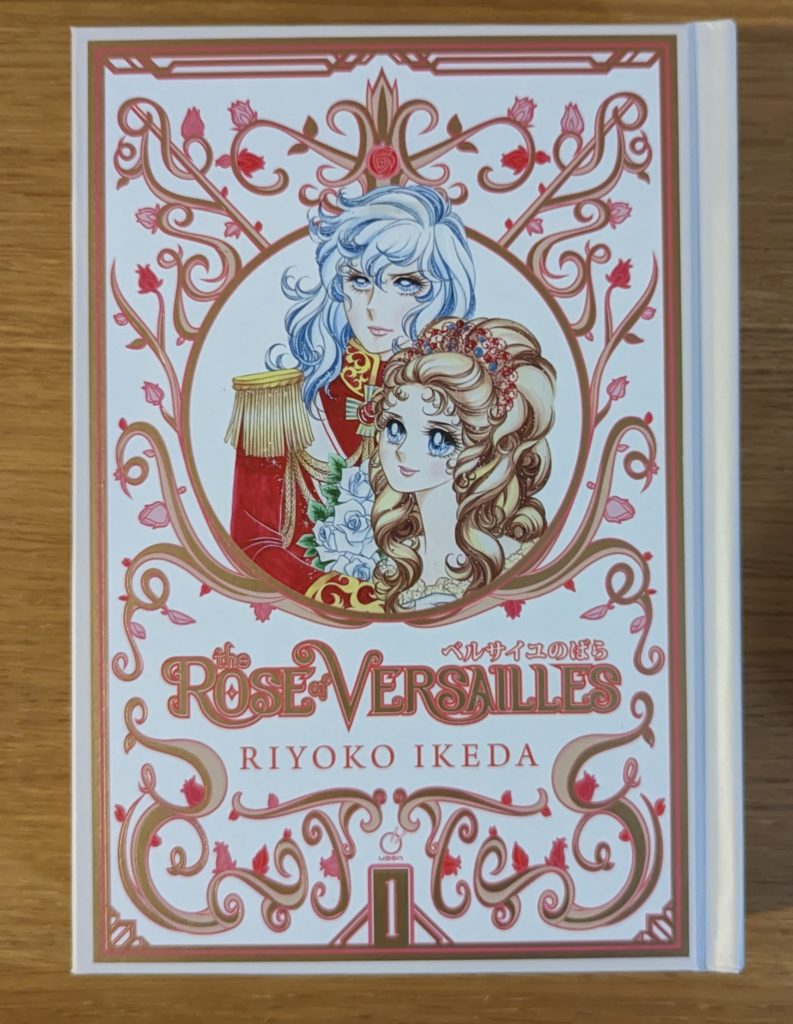
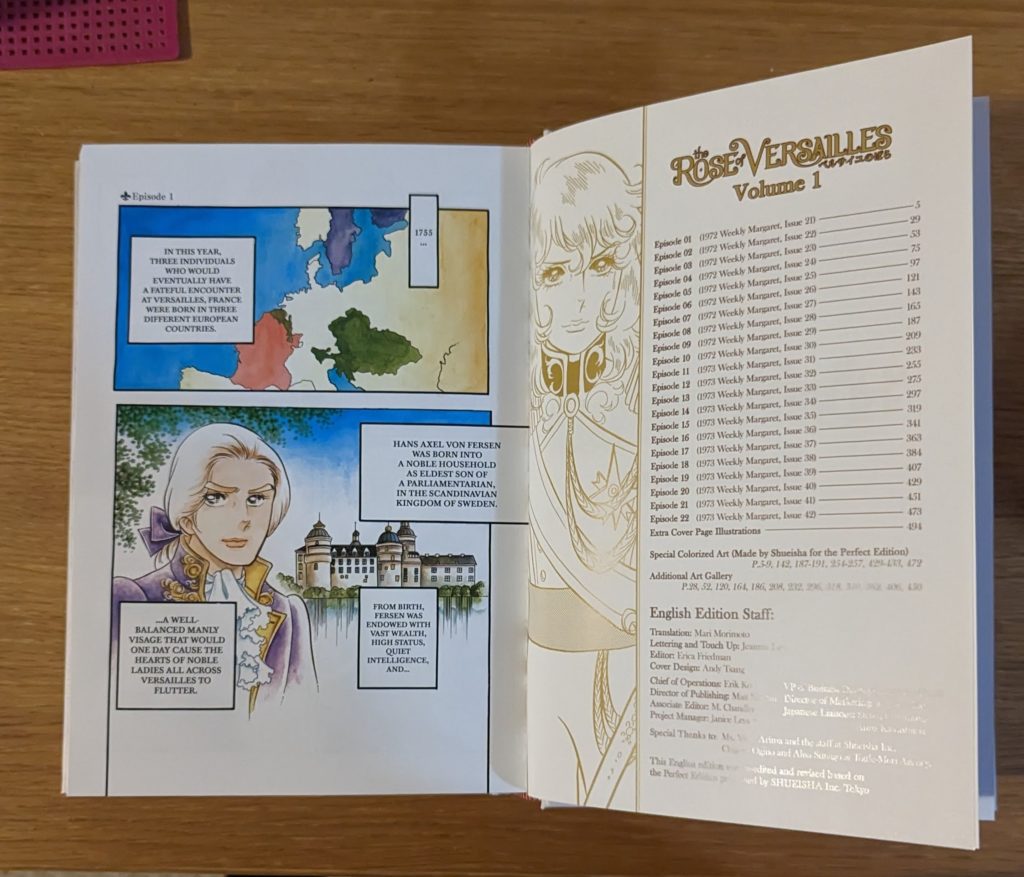
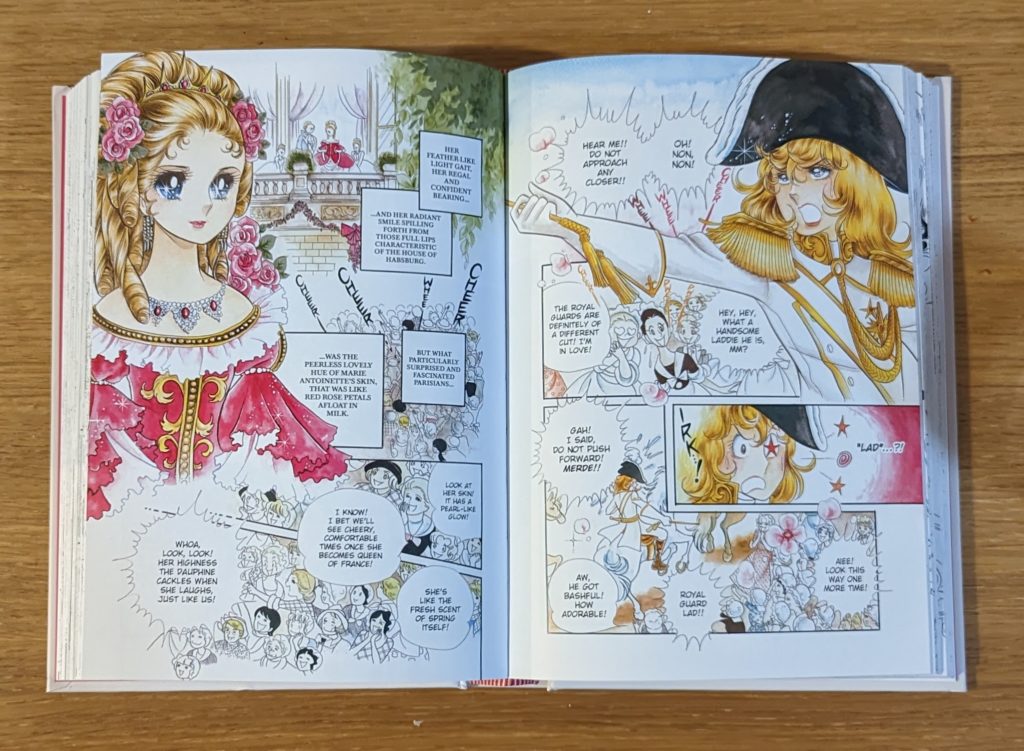
And that, finally, takes us to the end of this episode on Rose of Versailles. Sorry it took so long to get out, thanks for reading! Shout-outs after the break.
47:31: THE BREAK
Alright, now it’s time for SHOUT-OUTS!
Not quite a shout-out to start, because David mentioned this Lupin III– and Marie Antoinette-themed production at The Takarazuka Revue, and then we include it here. He explains it in a way that makes it sound really fascinating, and having been to the Takarazuka Revue live in person one time I agree that it is an absolutely unique and incredible experience that everyone should see once, even if they don’t understand Japanese. But for now, if you want to see what David is talking about, you can check out the Takarazuka Revue Wikipedia, or this video:
Then, this week Deb shouts-out the new Minami Q-ta release from Starfruit Books, Not All Girls Are Stupid. As you remember we read Q-ta’s short “The Blood Red Boy” here on the podcast many moons ago, and this full-length release looks pretty darned good. A future Mangasplaining pick? We’ll see!
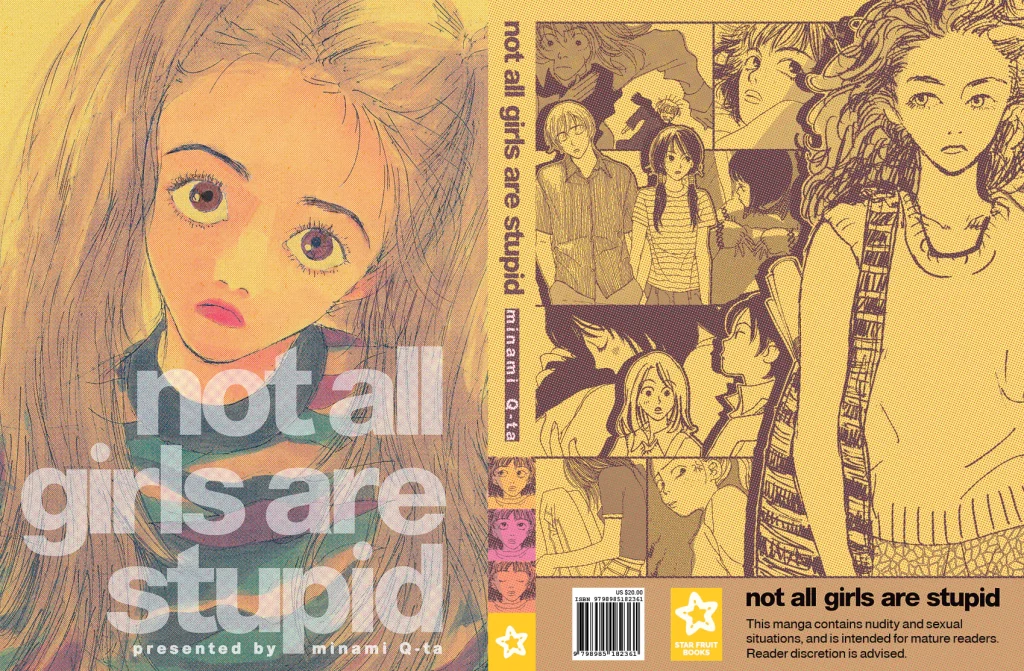
Deb and I met Minami Q-Ta at Comitia a few months ago! She was so nice and we bought her doujinshi. She was even kind enough to pose with our postcard, lol. Anyway, yeah, go buy her new book (and her previous ones!) from Starfruit.
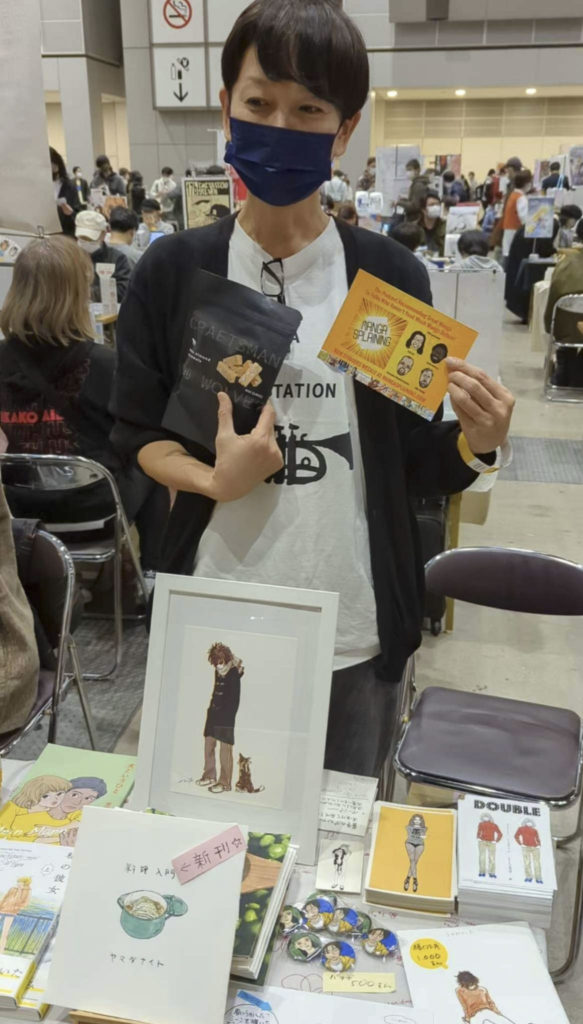
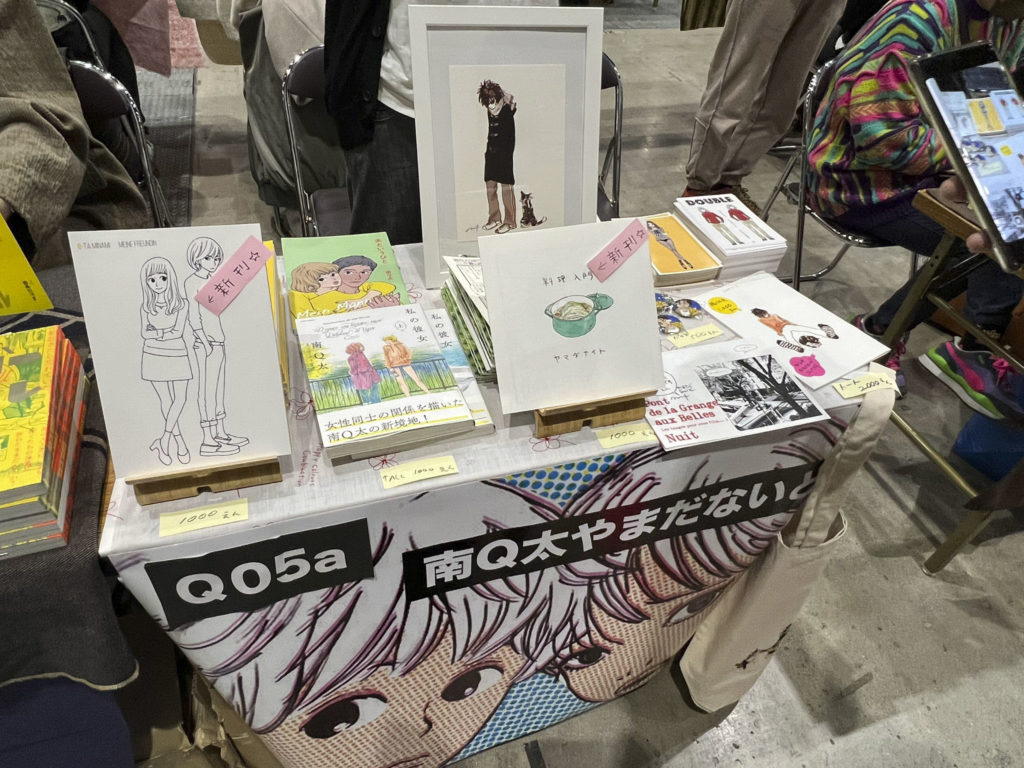
Chip recommends the book Less by Andrew Sean Greer, it won the Pulitzer Prize! He also just read and really enjoyed the book’s sequel, Less is Lost. Christopher was SUPPOSED to read those for gay book club in Taipei, but as we find out on a later episode, he never did, because he was too busy travelling in Taiwan to attend book club. Sort of like why this episode’s show notes were so late.

Despite the lateness of this episode (and the next one…) Christopher recommends that you hit the road, jack. Why he’s sitting in a Japanese Denny’s right now, finishing these notes (and getting started on the next ones).
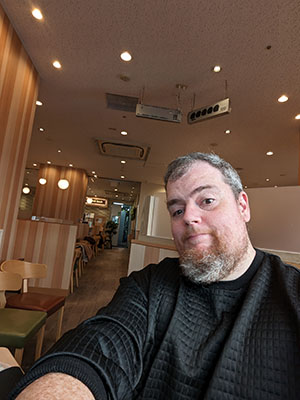
And that’s this week in Mangasplaining! This episode is also available wherever you get your podcasts, so please subscribe and leave a review, so others can discover our show.
Also, if you’d like to get the latest episode delivered straight to your inbox along with exclusive interviews, articles and new chapters of manga you can’t read anywhere else, subscribe to our Substack newsletter. See what you’re missing at Mangasplaining Extra!
Next week on Mangasplaining:
Get ready for UNDER NINJA by Kengo Hanazawa. Except the episode is already out! Wherever you get your podcasts! Show Notes Soon!
Thanks so much for listening! Please support your local comic and manga specialty shop when purchasing these books, and you can find one near you at comicshoplocator.com. You can also check your local library for print and digital lending options, they have TONS of manga! Finally, thanks to D.A.D.S. for their musical accompaniment for this episode.
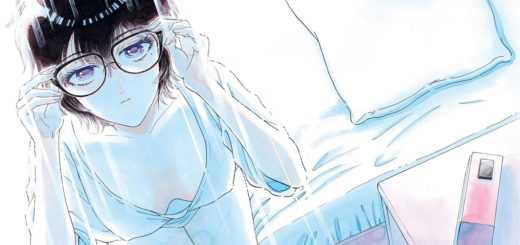
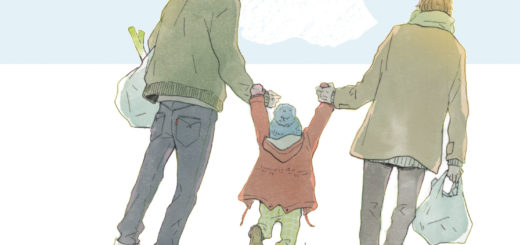
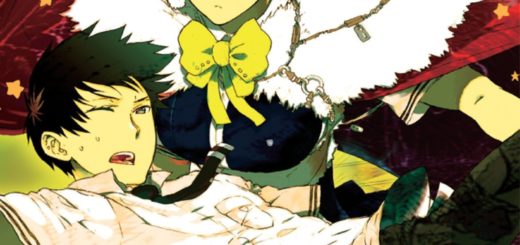
I could comment on this all day–70s shoujo manga being my obsession, but I don’t want to say anything till the shownotes are up as I can be obnoxious enough without repeating the information Chris and Deb probably will put so much better. But I did want to rant about why Ikeda isn’t actually a Year 24 member–or at least isn’t considered one in Japan itself.
Bear with me, but a personal pet peeve that most people really probably find unimportant, is lomping Ikeda in with the Year 24 group, despite what Wiki says. As Rachel Thorn has said, this seems to be mostly a Western thing–she was born at the right time, and RoV specifically is probably the most important and most well known shoujo manga of its time, and certainly, thanks I think partly to its inclusion in Manga! Manga! *the* classic shoujo manga Western fans had some familiarity with. But ask any Japanese manga scholar, and they will tell you she absolutely isn’t aesthetically a member. The Year 24 moniker was created by otaku (the same guys who created the shoujo loving Puff Magazine) in the late 70s, and it was to categorize the work of Moto Hagio, Keiko Takemiya, Yumiko Ooshima (and, pick and choose, Ryoko Yamagishi and Toshie Kihara are usually included.) In fact these same otaku (who took their manga very seriously–there are reports of members telling Hagio she shouldn’t waste her talent on comedy for example) saw Ikeda, as well as the other blockbuster shoujo mangaka of the 70s Machiko Satonaka, as being the *antithesis* of the Year 24 group and (keeping it classy) would send Ikeda and others hate mail saying they should just give up.
Separating the two “domains”–The Ikeda domain is the category in which the artist depicts a “stormy life story” as a proxy experience for the readers. It is shojo manga as a popular (and often epic) novel that provides an experience that readers could never experience in the real world. The artists in this domain include at the very forefront, Riyoko Ikeda, followed by Machiko Satonaka, Kyoko Ariyoshi, Sumika Yamamoto, Yoko Shoji and Yukari Ichijo.. The topics in this group include historical drama, coming-of-age stories, “spokon” (“sport and spirit”), and sexual love (at least in the manga appearing in the girls’ fashion magazine Seventeen, where they targeted upper teens exclusively). The heroine is generally a European princess, aristocrat or a lady of the court in the Heian Period or, in contrast, a contemporary girl whose huge talent and hard work causes her to excel in sports or dance. Through the heroines’ experiences, readers can identify with the heroines and other main characters. The two top 1970s shoujo magazines for older girls, fit securely in this domain—Margaret, which had the historical epics of Ikeda as well as the blockbuster tennis manga Aim for the Ace! and ballet manga Swan, and Shoujo Friend, where Satonaka and her contemporary epics reigned..
On the contrary, is the “Hagio domain,” which we call the Year 24 or Magnificent 49ers group. Deeply psychological and often heavily involved with the “interior” world of the mind, these works also introduced sci-fi to shojo readers. Unlike Satonaka and Ikeda where plot predominates, here deep and often ambiguous characterization is all important. Among these artists, Moto Hagio (The Poe Clan), Keiko Takemiya (The Song of Wind and Trees) and Ryoko Yamagishi (Hi Izurutokoro no Tenshi) are the most representative. Shogokakun’s Shoujo Comic, a younger magazine than Shoujo Friend or Margaret but targeting the same demo, and Hakusensha’s Lala is most associated with this group, largely in part because their editors Junya Yamamoto and Nobumasa Konagai respectively, had a nothing to lose mentality, and encouraged riskier narratives and styles to contrast with Margaret’s works. Both Shoujo Comic and Lala were steady sellers, with extremely devoted followings, but never the blockbuster that Margaret, especially, was, in the 1970s.
As a Japanese friend explained it to me, Heart of Thomas is like Portrait of a Lady and Rose of Versailles is like Gone with the Wind (without the problematic aspects of course.) One is primarily about character and interiority and the other is all about incident which is reflected even when you read the two side by side–both were weekly serials with short 15-20 page chapters each week, but Rose of Versailles always makes sure to end each chapter on a cliffhanger, and just tumbles incident after incident after incident. I love both, for different reasons. And anyone who has read this far probably is wondering why it should matter if people list Ikeda as a Year 24 member–but I think it gives a bit of a false sense of shoujo manga history. Rose of Versailles is not a key Year 24 manga–its importance is because it is a key *blockbuster* shoujo manga (and, as more and more scholars are pointing out, it also helps dispel the slightly false narrative that has come about that before the Year 24 group, and aside from the Year 24 group, shoujo manga was worthless.
I’ve been waiting for a while for this episode–even re-read the manga a few weeks ago (was only going to read the first volume, but went all the way through the first four, though I left off the 1980s gaiden that make up volume 5 which I remain on the fence about, but I digress…) And you all didn’t disappoint–thanks for providing such a wonderful discussion.
I do want to acknowledge once again how, after such a long wait, the people behind the Udon release of Rose of V didn’t disappoint. I think the translation work of Mari Morimoto and (from volume 2 on) Jocelyne Allen and editing of Erica Friedman is pretty perfect (certainly it reads better than the French translation) and I’m so glad Udon decided to use the Perfect Edition as their source. The show notes mention that we get the colour pages–but in fact we get even MORE colour pages, as a lot of the pages, as noted in the book, have been newly coloured for this edition (and as a bonus they actually include as a bonus some of that art in its original B&W.) And yes, as Chris said, I was very excited to get the full original serialization dates for each instalment.
In Japan recently there has been some push back about Rose of Versailles being seen as, to quote Chris’ note, “the entire genre’s first major mainstream critical AND commercial success” (a bit like how now people are starting to realize that, well, maybe Tezuka, despite his claims, didn’t really invent every single genre of manga himself…) It didn’t exist in a vacuum– Specifically, and importantly, you had Hideko Mizuno (who perhaps should get credit for inventing most subgenres of shoujo) and her work Fire! which ran in Seventeen (a fashion magazine that would serialize shoujo titles aimed at an older readership than the shoujo magazines of the time) from 1969-1971. It was the first major shoujo work to get a huge readership that wasn’t made up of the typical shoujo audience, it won some of the first major manga awards and was a best seller (one of the first manga to be published in hardcover in fact.) Aside from having many of its own shoujo firsts (an epic “real world” setting, a counter cultural sensibility, a male protagonist, sex scenes, etc.) In fact Ikeda herself has said that the scope of the manga was a direct influence on Versailles, showing her such a story could be done in shoujo, and aspects of Oscar were modelled on Mizuno’s homoerotic rock star Fire Wolf. (Rose of Versailles in fact feels in some ways a bit of a step back from Fire! in terms of maturity, due to being in Margaret magazine.) Fire! also led to much merchandising including a record album–and is getting new attention in Japan with a deluxe reprint that just came out.
In many ways Fire! is actually a more sophisticated title–art and story content–than Rose of Versailles was, at least initially. So it’s at least one example of a shoujo work that did start to get serious critical (ie “male”) attention, was a big best seller including in deluxe book form, aged up the shoujo readership to late teens (and college students) and won major awards. Which is not to take away from Rose of Versailles *at all*, and make no mistake, Rose became a *phenomenon* unlike anything before in shoujo, but it really wasn’t the first to head in that direction and didn’t just come with no precedent.
Similarly, it’s a bit of a fallacy that before Ikeda as well as the Year 24 group, most shoujo manga was written by men. By the mid 1960s the majority of shoujo manga was written by women (though there were still more men writing it than their would be by the mid 70s). The narratives were already expanding (there were a surprising number of short shoujo works dealing tragically with WWII concentration camps in the 1960s) and while Hideko Mizuno was, I feel, far and away at the forefront of these innovations, there were a number of important female mangaka who were already paving the way for the innovations of the 1970s.
Re-reading Rose of Versailles, one thing stuck me immediately. I had just finished reading the old French volumes of Window of Orpheus, Ikeda’s later manga (which she has called her “life’s masterpiece”) which in many ways feels like a re-do of Rose of Versailles–cross dressing lead, historical revolution setting (Russian this time) etc. It’s an amazing work–I think it’s deeper and more mature than Rose with Ikeda’s art at its very peak (similar to Claudine, which is out in English and was written during the Orpheus run.) But in some ways it’s less fun (Ikeda had completely dropped her cartoony bits by this point, and I always liked them) and more ponderous.
But with Orpheus, Ikeda also was allowed to take her time with scenes. She wasn’t given that luxury with Rose of V and I was amazed at just how economical the story telling is. A sequence that might last five or more minutes in the anime adaptation (and I’m one of those rare fans who likes the anime, with all its changes, just as much as the manga, especially the back half when Osamu Dezaki took over as director) might last two pages in the manga. Often she even will change scenes *mid page* which I think is unheard of in moderm manga (and I know some people find confusing–though I like the giddy pace it helps maintain.) Ikeda has said (and other shoujo mangaka have echoed this statement) that in the early 70s it still was frowned upon for a shoujo work to go longer than the equivalent of a few volumes (the aforementioned Fire! ended up taking up four, and that was I think a record for shoujo up to that point.) So storytelling HAD to be compressed–and Rose of Versailles was seen as long for a shoujo, ending up as it did with (the original run) being collected in ten tankoubons. Window of Orpheus is twice that long, and Ikeda has said that by the mid-late 70s, suddenly longer series were beginning to be encouraged (two big examples of this are shoujo classics, Toshie Kihara’s Mari to Shingo and Takemiya’s Kaze to Ki no Uta which ended up being 17 volumes). But again, I don’t see this as a detriment for Rose, which I think makes perfect use of its plot heavy intense style so compellingly.
My initial readings of Rose of Versailles were first the chapter in Manga! Manga! literally 30 years ago when I was 11, then a few years later, from the two volumes Frederick Schodt translated for the Japanese bilingual market in the 80s ( worked HARD to track down those copies–when I recently posted a photo of them on Twitter, Schodt replied that even he had never seen volume two in print before my photo) and then from the French omnibus editions which I first read maybe 20 years ago. Those volumes, like the earlier Japanese ones, don’t provide chapter breaks for each weekly installment, and that’s to their detriment I think. I was very glad Udon used as their basis the Japanese perfect edition which does include each chapter break–as it makes the reading experience so much better. Without those breaks, it does seem like Ikeda is just providing cliffhanger after cliffhanger, only to have them resolved a page or two later. But with the chapter breaks I finally got the sense of HOW she was shaping each chapter to build to the end of its 20 page installment–and it made me much more impressed with her storytelling craft.
Whenever I see the anime OP I’m reminded that by the time of the anime, it was firmly understood that the Rose of Versailles was Oscar herself (and indeed they focus on her from the first episode, as well.) But of course when the manga started the Rose was Marie Antoinette. I love seeing with older manga how the story would be shaped by reader response, etc. There still wasn’t much chance that a manga would be collected in book form (especially for shoujo–Shogokakun in fact only released their first shoujo tankoubons, Poe Clan, the same year as Rose of V, 1972.) So unlike now where often a manga’s serialization serves mostly as an advertisement for the eventual book release, these manga were much more an ephemeral creation, only as strong as their last serialized chapter and with no thought given to how they would read in a different format. And as Hagio has also discussed with both Poe Clan (which began almost the same month as Rose of Versailles) and Heart of Thomas, the serialized manga’s life was really dependant on reader response cards (the same way a soap opera would be dependent on its weekly ratings.)
I really appreciated the general opinion of just how good the storytelling is–given the way the manga was written, the overall format, whether it came about by design or by semi-accident, is brilliant, with how the scope of the piece opens up from basically focusing entirely on the closed world of Versailles (with short interjections for the Rosalie storyline) to, suddenly broadening out to France as a whole. Similarly the way seemingly minor characters ultimately become important–and the reader already has the sense they’ve always been in this manga world. And yes, Jeanne is great (perhaps one mistake of the anime was giving her a bit of a redemption near the end of her life, but the anime had to fill in a lot more details which the manga could get away with just skipping past.)
The Jacques Demy live action movie fascinates me. Produced and scripted by the Japanese (with Ikeda apparently being in charge of overseeing the script, which makes me wonder why she made Oscar so much weaker,) directed by a french auteur, and then inexplicably filmed in English, it’s baffling. Jacques Demy is one of my all time favourite directors–not just the well know films like Umbrellas of Cherbourg but I like a lot of his lesser films like Parking, so I was all the more disappointed when I finally saw the film. But, I guess if you wanna see Oscar live, you always have the option of one of three different Takarazuka musicals (and I loved how excited David was about one of the weirder Takarazuka musicals.)
I do wish you had asked about how Rose of V compared to the vintage shonen you read from that time. I know it’s outside the scope of what you’ve covered, but it’s also fascinating to read Ikeda’s blockbuster manga side by side with one of the first important Year 24 works that was coming out literally at the same time, Hagio’s Poe Clan–to see what storytelling techniques each mangaka was experimenting with, where they had similarities or stark differences, etc. My friend who works in the Kyoto University manga department has talked about how in school in the 1970s the girls would be fiercely loyal to one title (and so style) of shoujo over another–but then invariably would “secretly” read the rival title just so they could keep up with the conversation.
I’m a bit surprised there was no mention that fans can buy more Ikeda in English–Seven Seas has the short, 1978 100 page Claudine. Already Claudine has a reputation for telling a trans story (as opposed to the situation with Oscar) but also being a tragedy, but in its defence I should point out that this isn’t really a case of “bury your gays” (or trans people in this case) the way it would be in the West. 1970s shoujo manga, unless it was a comedy or an otometique high school series, *invariably* ended in tragedy. That was just what sold, and what was the aesthetic of the era. With virtually no exceptions–so it’s not surprising that this is also true of the titles that deal with gender and sexuality (few manga have made me cry like Kaze to Ki no Uta.) Anyway, Seven Seas never published another classic shoujo title after Claudine, so maybe if it still sells that could make them see there’s some interest (and the art, more so than Rose of V, is PEAK Ikeda stunning.)
Like Chip, I loved Less (I read a lot of gay lit, but it’s rare to read a gay lit *comedy* that I think is perfect–I think the last time that happened was years and years back with Hollinghurst’s The Spell.) But the sequel has… been hard for me to connect with. I stalled about half way through, but have to rev myself to get back into it (and I guess a third is on its way.)
Also, I can’t help myself, I laughed out loud at Christopher’s excited comment about leotards, both in the podcast and in these notes. But… I gotta ask, Christopher, are you sure you know what a leotard is? Cuz I don’t and can’t see Oscar wearing one… Bell bottoms, on the other hand…
Nice to see the full comments! I’m sticking to my guns on the leotard thing though–and though I never had to wear one, I did 15 years of ballet and dance, so feel I have some knowledge of them ( boys and men don’t usually wear them to ballet class–but girls and women sure do)
Per Wiki (I know, so dependable) “A leotard (/ˈliːətɑːrd/) is a unisex skin-tight one-piece garment that covers the torso from the crotch to the shoulder. The garment was made famous by the French acrobatic performer Jules Léotard (1838–1870). There are sleeveless, short-sleeved, and long-sleeved leotards. A variation is the unitard, which also covers the legs.
For men: “Men wear two layers of clothing. The first, a singlet (or comp shirt, short for competition shirt) is a sleeveless leotard. For floor and vault, gymnasts wear a pair of very short shorts over the singlet. For their other events, they wear a pair of long pants, attached to the bottom of the feet with stirrups. ”
A leotard in other words has a V shape that tucks into the crotch and goes up at the hips for women (it’s what you see under a tutu for women doing classical ballet) and the male equivalent usually doesn’t go up at the hips but has a square cut, right under the crotch. Like a singlet. I repeat, there are no leotards in Rose of Versailles. I think you just mean pants-like-tights- (that in this case flare out because it’s the 1700s by way of the 1970s.) 😛 And I stand by that. (I admit I find it rather hysterical that I think this is the first time I’ve stood by a disagreement with something said in Mangasplaining 😉 )
Not sure if the show notes are in progress and they’re coming, but juuuuuust in case this is some sort of coding error, just wanted to mention that at 30:30 as well as the last bit of the show notes say “IMAGE” or “VIDEO” instead of actually showing the image or video. As always, appreciate greatly what you do!
I think there are technical issues–I posted two comments last week (how could I not, when discussing Rose of Versailles?!) and they still say they’re awaiting moderation, something that has never happened in the past…
Fixed those comments, and yes, show notes are incomplete. Sorry y’all! Fixed this weekend.
Great episode, as usual! I always thought the point of the series was Oscar, so it’s interesting to see that featuring M’Lord more prominently was an unplanned shift, due to audience reaction.
Since the manga was largely unavailable in the US until recently, I interacted with the series first via the anime, and (within the grey internet…) hunted down the live action movie. When I was finally able to read the manga, via the gorgeous Udon volumes, I was not disappointed! As a comic artist, I love Ikeda’s visual storytelling. Yes, occasionally I was confused by a layout, but I frankly have the same issue with classic superhero comics. I feel that the idea of clarity has much more weight nowadays, but it inspires me to be a bit more inventive with my layouts.
Also, the 70s vibe gives me HUGE Oniisama e vibes!
I appreciate that Udon is releasing (just announced starting in June) Ikeda’s recent second batch of Rose gaiden (the first batch, from the early 80s, make up Udon’s volume 5.) But I really wish the success (I assume?) of this release would mean they’d release Oniisama E, which, like the French volume I have, is so short it can be in one 500 page volume (unlike Dezaki’s Rose of V anime, his Oniisama E anime had to *add* a lot of elements to the manga to flesh it out.) Of course my dream is that they’d next tackle Ikeda’s self-proclaimed masterpiece, Orpheus’ Window but it’s not a title familiar to English speakers (no anime!) and is twice as long as Rose of V so I’m thinking that’s still seen as too big a gamble.
(At least we did get the short one off Ikeda manga, Claudine from 7Seas.)
I’m weighing in a little late on this, but first of all – thank you for taking an episode to read The Rose of Versailles!
Volume 1 is pretty much pure shoujo historical fiction from 50 years ago now, , so it’s no surprise that some folks might find the art and story off-putting, but I love it. ^_^ I hope you read the rest of the volumes, because everything changes as the Revolution nears and the 5th volume is totally gothic and whack 10th anniversary stories. The 6th volume, which is yet to be released is the 40th anniversary stories and finishes everything up in mostly historical ways, except for the the bits that are not.
As for the historicity – everything in this series is historically accurate, except for the things that aren’t. Yes, the Affair of the Necklace and yes, Jean accused Marie Antionette of being a lesbian and yep, she definitely did write something like 7 bestselling tell-all books that made her rich, even though she was in prison, then on the run and all of it was most likely lies.
When I read this volume the first time – which was when I was editing it! – I was amazed at how much historical background Ikeda-sensei laid down, thus giving us a really solid grasp of the why are wherefores of the French Revolution.
Editing this was a joy, I got to work with Jocelyne Allen and Mari Morimoto, two of my dear friends and top translators. We did so much historical research, ngl Wikipedia was a huge help, We had so much discussion about the non-historical elements. Transliterating “Marie Antoinette” is easy, but what do we do with a name like Girodel, who did not exist in the historical record?
I agree 100% with Deb, I think this Udon edition is the best looking of all of them. The Udon team took such care. I was the person who made sure that every image was listed with the date and issue of the magazine that it ran in. That was actually a lot of fun, although it was a lot of work. But those covers, the color pages…the lettering. It’s all wow.
Here’s my RoV anecdote. After I finished working on Volume 9 with Mari, which I did first before working on the rest of the series, I was in Japan at Mandarake and found 3 issues of the original Margaret magazine in which RoV ran. I bought a copy each for Erik, Mari and myself…so I have the original climactic chapter where Oscar storms the Bastille. ^_^
Thanks again for giving this a look!
“Everything in this series is historically accurate, except for the things that aren’t,” this is going to be my go-to phrase when describing RoV from now on.
Thanks again for all your wonderful work on this (like Christopher, I particularly appreciated including all the original serialization dates–such a little thing that makes such a difference in terms of impact.) Also liked how you translated certain quirks–like Rosalie’s “I, moi”–which seemed lost in the French translation I grew up with.
Sorry if this is coming off as a show off I read post. I think a good companion to this episode would be Paperback Crush: The Totally Radical History of ’80s and ’90s Teen Fiction by Gabrielle Moss. Was interesting to see parallells in the development of “disposable” media for young girls/women written by female creators.
Hey Mangasplainers! It’s been awhile since I’ve been able to listen, read, and comment, but I haven’t forgotten about you!
I think between the show notes and and Eric’s amazing and in-depth comments, I to all the RoV of information I could possibly process right now. I know Christopher alluded it to it the notes, but for some reason it feels like every episode of Mangasplaining was building up to this episode so that everyone, Chip included, would have the knowledge and wherewithal to discuss it.
You know, Udon’s release of RoV isn’t the only example of the Western, specifically North American, release of manga being packaged better than the original. Nijigahara Holograph, Beserk, and Bat-Manga come to mind. I still wish there was a Japanese version of AKira as well put together as almost any of the versions released overseas. I suppose the economics of it just aren’t there in Japan.